Dramatically jagged mountains, covered by a picturesque layer of eternal snow overtowering fir-covered hills – Bariloche is a Swiss Vacation, however, on the Opposite Side of the Globe.
Trouts jumping in ice-cold turquoise waters of glacier lakes, rivers, and creeks.
Still not Swiss enough?
Well, the town of San Carlos de Bariloche cranks it up a notch by manufacturing some of the world’s best artisan chocolate and making you pose with a Saint Bernard dog – including the small barrel of rum around the neck; his neck, not yours.
In this post, I’m introducing some of the best things to do in Bariloche, a Swiss town in Northern Patagonia.
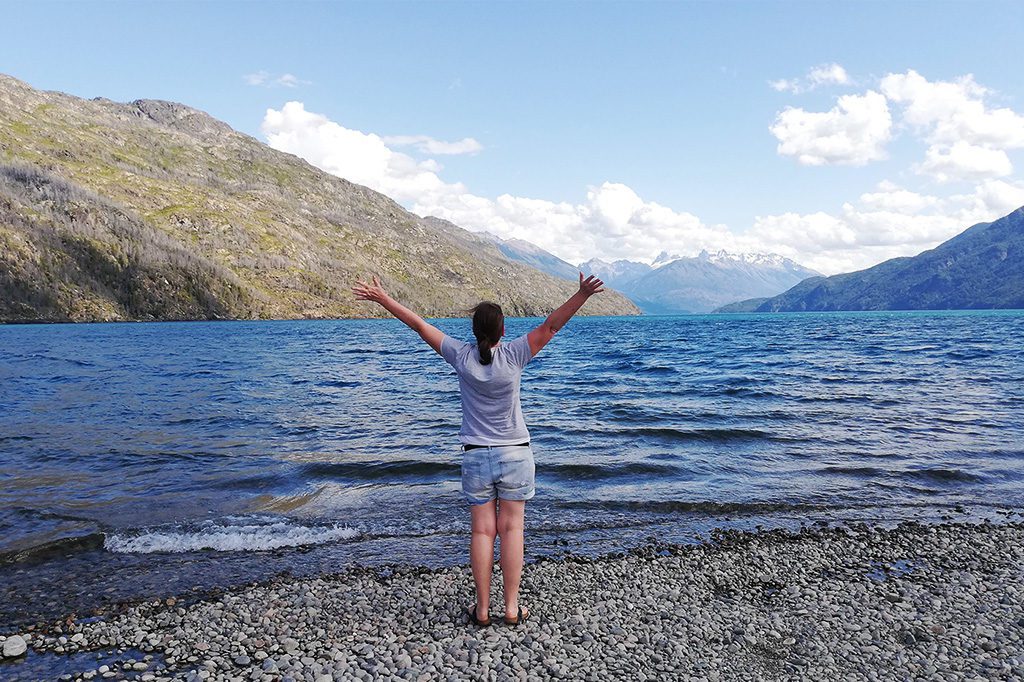
Bariloche
As a matter of fact, San Carlos de Bariloche, located in the North of Patagonia at the bottom of the Andes and at the border of the large glacial lake Nahuel Huapi, is most of all the perfect starting point for hikes and ski trips to the surrounding mountains and the mesmerizing lake lands.
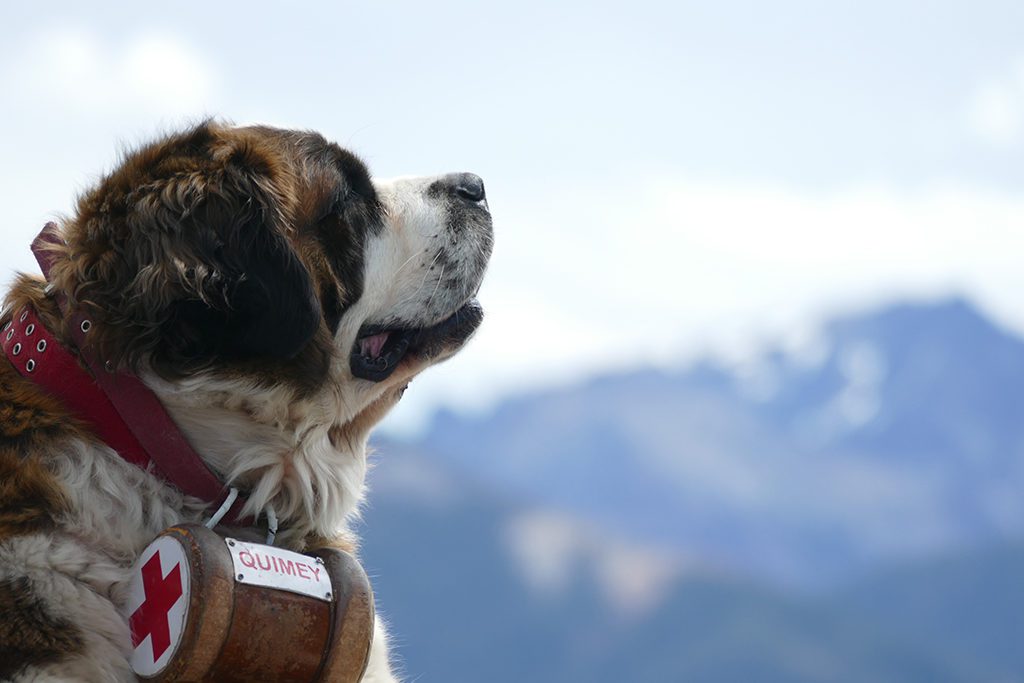
Since I was there during the Argentinian summer, there, obviously, was no skiing, which I didn’t miss a bit….since I don’t ski.
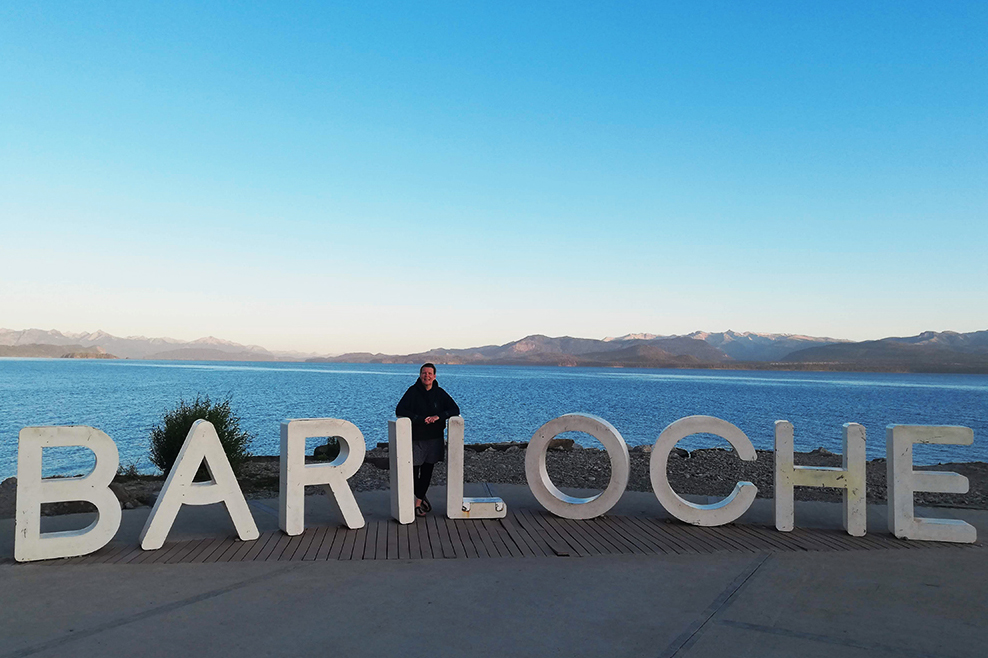
But I like nature. I enjoy majestic scenery. I love beauty. And the lake land around Bariloche has tons of it.
The Town in Former Times
Supposedly, Chilean-German Carlos Wiederholdt Piwonka established a settlement that in 1902 officially became the city of San Carlos de Bariloche. Although the Germans encouraged more compatriots as well as the Swiss to settle in the area and focused on trade mainly with Chile, tourism picked up the pace quite early, namely in the early 20th century.
There is a very dark side to Bariloche: I don’t know if it was for the large German community or because the mountainous region is so Alpine-European, but after WWII, some quite atrocious war criminals found refuge there. The most infamous one is probably Erich Priebke who lived here undisturbed until, in 1993, German investigators applied for extradition.
Sadly, it was not unusual that Nazi war criminals found a safe house in Argentina. Mr. Perón was very cooperative in this field.
The Town Today
So, today, the town of Bariloche as such is not very alluring but also not as bad as some people put it. The home to some 130,000 inhabitants is surprisingly the largest city in the province.
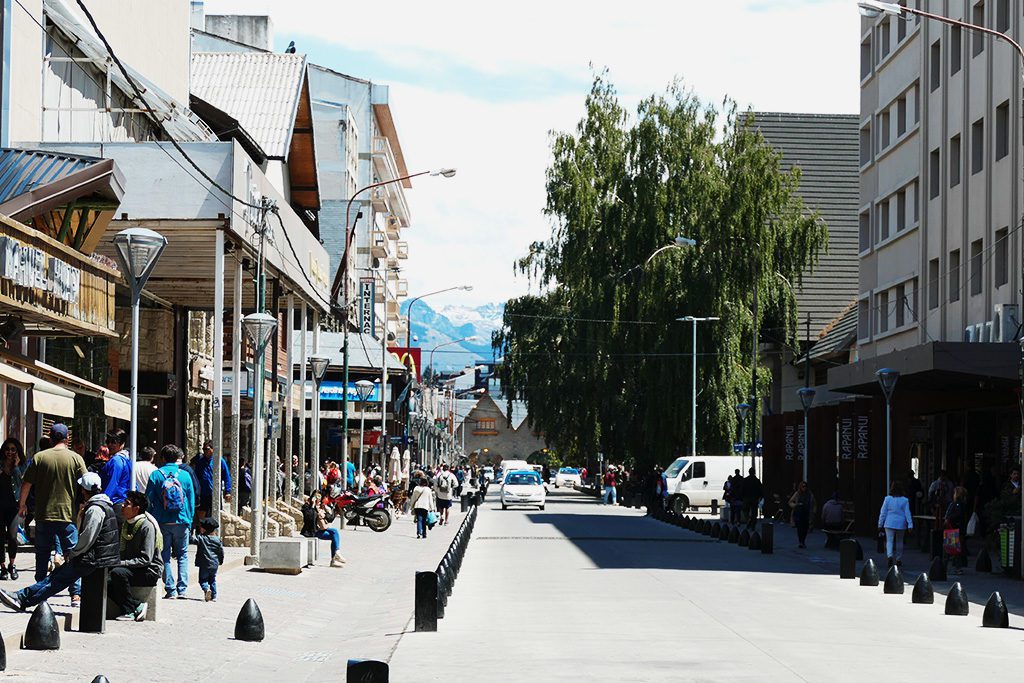
The entire city center aims at tourists.
There are chocolate and souvenir stores, eateries, and lots and lots of travel agencies since the main goal of Bariloche’s visitors is to leave the city.
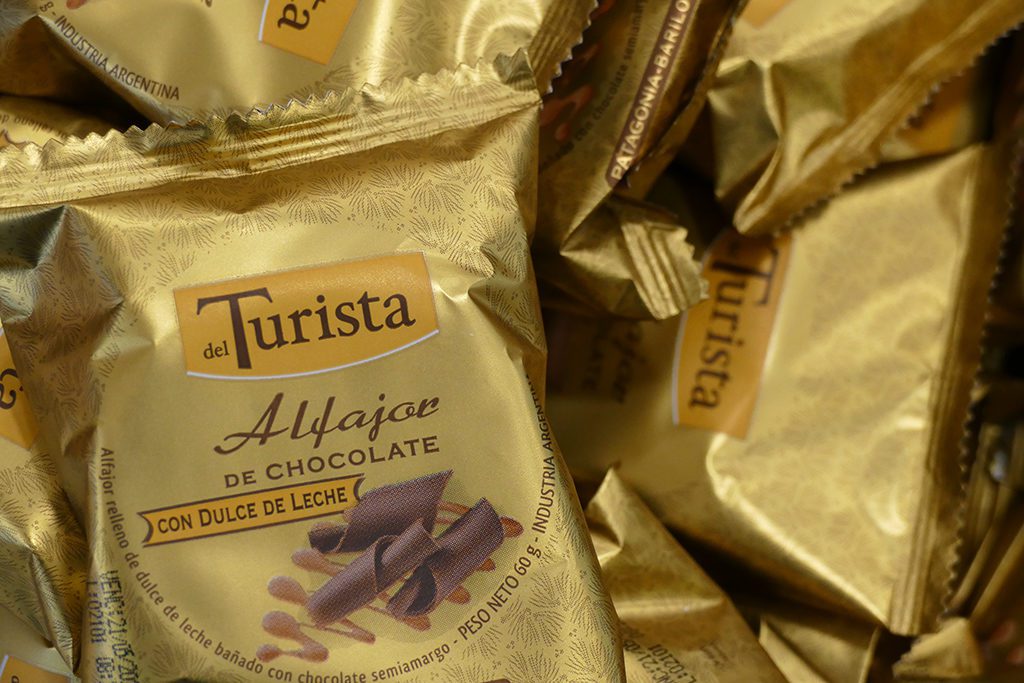
This is not an insult but actually tells you a lot about Bariloche’s strongest suit: The breathtakingly beautiful landscapes around.
Besides all the businesses catering to the visitors, there are few genuine tourist attractions like the church Nuestra Señora del Nahuel Huapi, inaugurated in 1946.
Also, there is the so-called Centro Civico, the civic center that looks like some Alpine mansion and is mostly interesting for those who seek tourist information since it houses also the official tourist information bureau.
However, if you can get the info you need somewhere else like for instance on the internet, I wouldn’t bother going there. It’s always, always packed with people and lines are very long.
Then, there are tons of guest houses and hotels all over the city center. Prices here are relatively high and names are quirky. For instance, Gstaad – already for a German tongue, this name of a Swiss town is a challenge. I would love to hear an Argentine pronouncing it, though.
Cerro Otto
As I said, hardly anyone stays very long in the center. The first beautiful attractions are already right on the outskirts of town.
Actually, there are beaches right at the center.
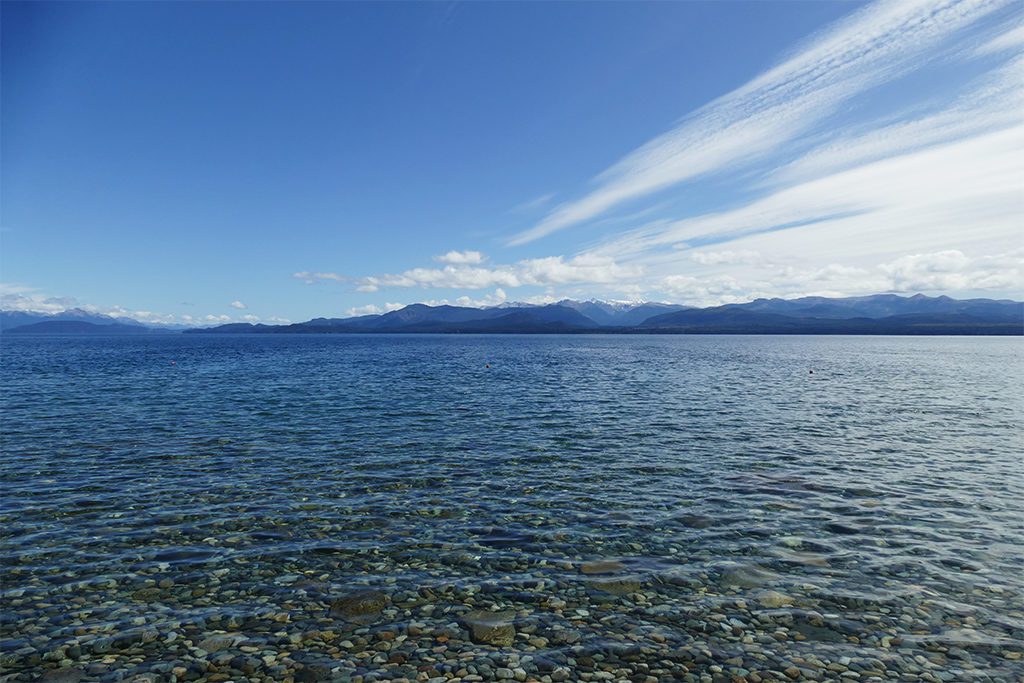
But even the places on the outskirts like for instance Cerro Otto, the Otto hill, are easy to reach. You can either get to the Teleferico, the cable car station, by public bus #50. Mind you, as I explained in my post on Buenos Aires, you need to obtain a SUBE card to take public transportation; yes, you can use the one you’ve bought in Buenos Aires as well in Bariloche.
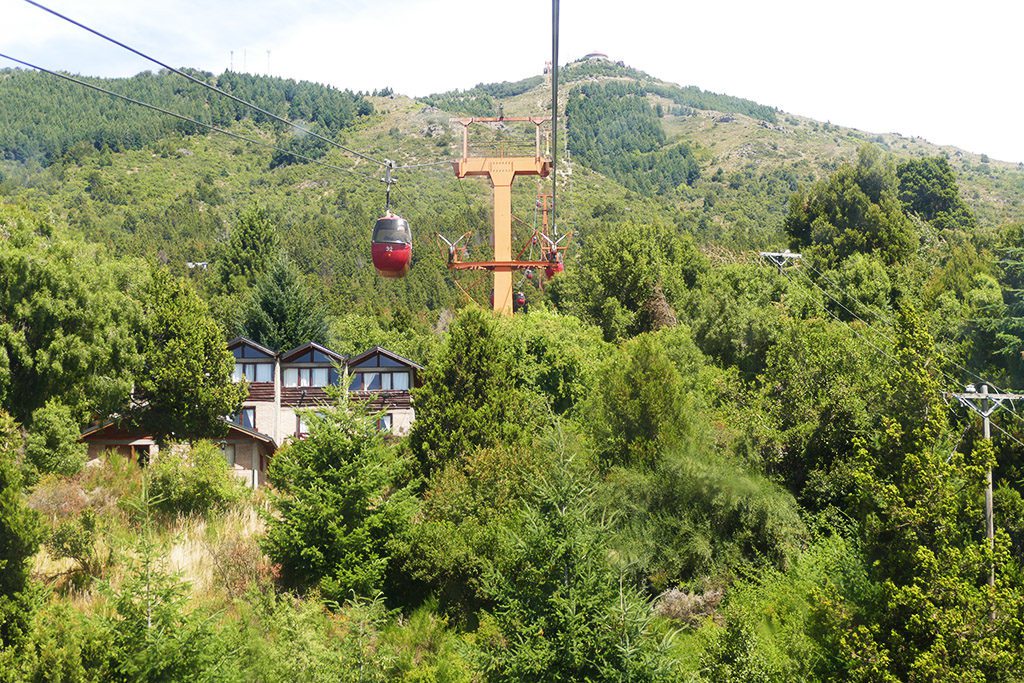
Or you go on a shuttle bus at the corner of the streets Mitre and Villegas. This shuttle bus leaves every 30 minutes and you pay 900 pesos – albeit this is the cost of the cable car, the shuttle itself is actually complimentary, but you still need a ticket.
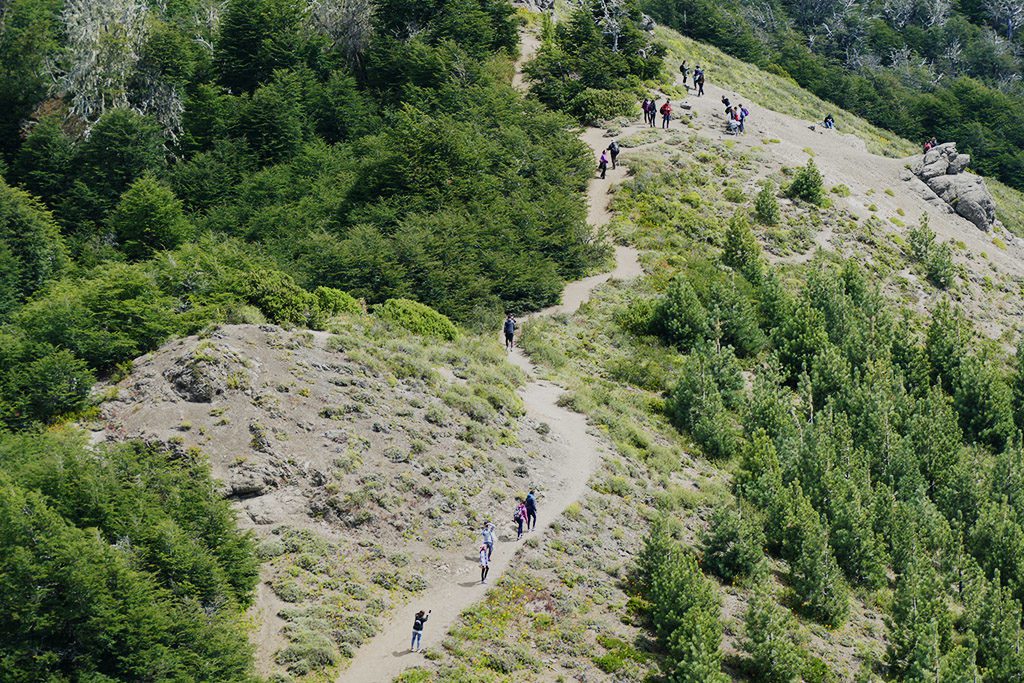
Otto Goedecke, one of the first pioneers that had his farm on the slopes of the hill, gave Cerro Otto its name.
And if you’re a trouper, instead of taking the cable car, you can actually hike the 8 kilometers to the top located 1,405 meters above sea level.
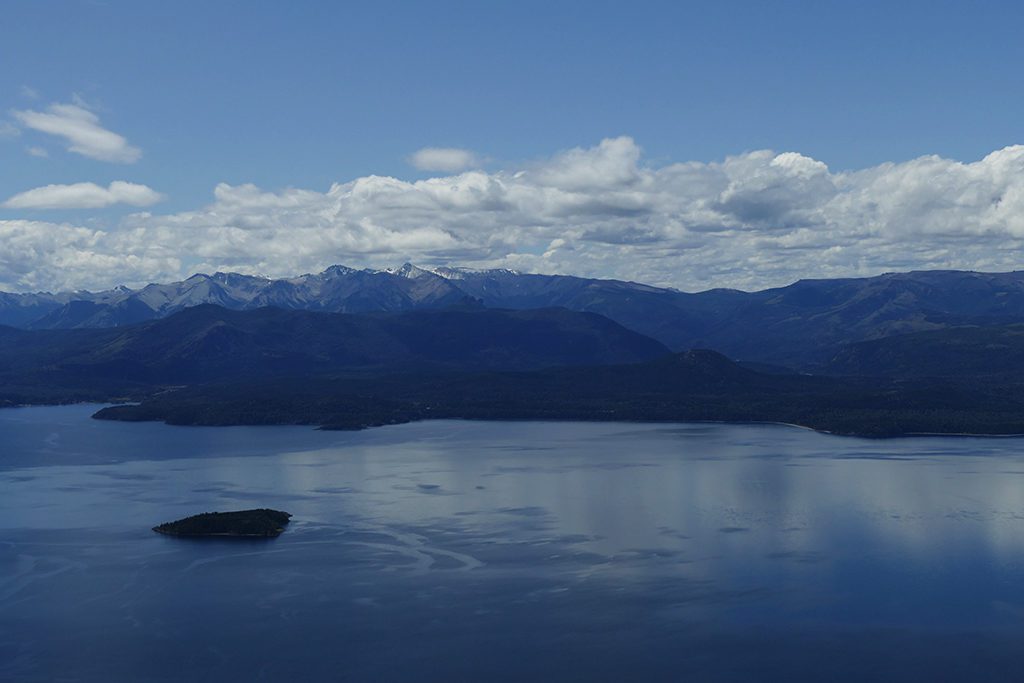
Why do I feel the need to stress this fact? Well, you might wanna read my post about Instagram.
No matter how you get up there, you’ll be rewarded with grand views of the entire lake Nahuel Huapi against the backdrop of an overwhelming mountain ridge.
Needless Entertainment
I already complained about this in former posts like the one on the Iguacu Waterfalls in Brazil and another on Kawaguchiko, the town located at the foot of Mount Fuji in Japan: Why do people need some additional entertainment in a place as mesmerizing and beautiful? How come nature’s beauty never suffices?
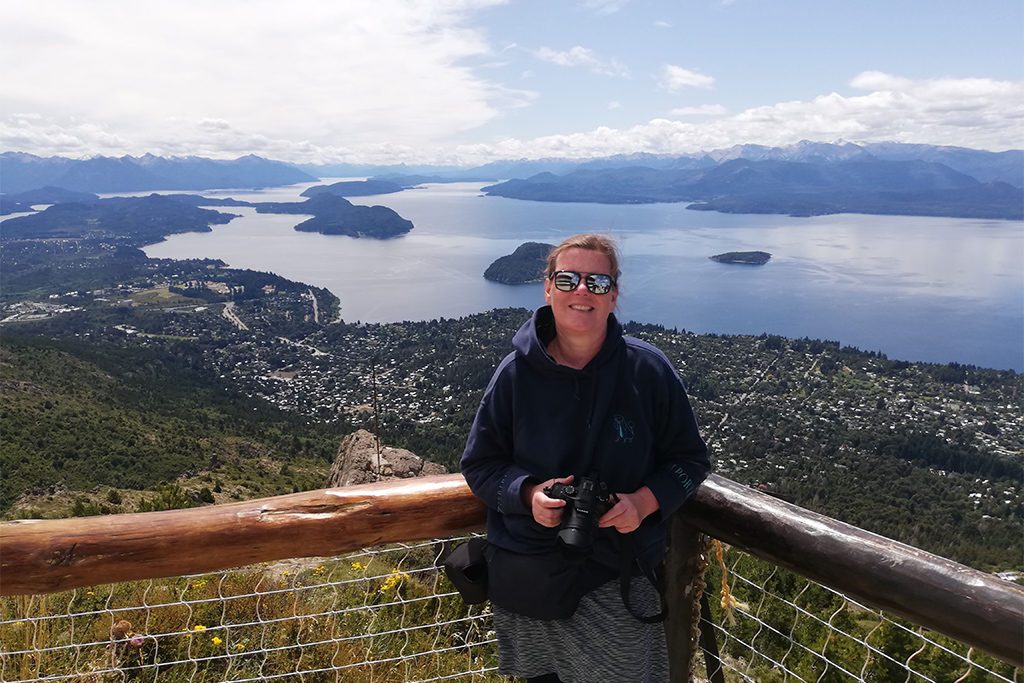
Well, whether you can answer this question or not, there is some additional entertainment – literally – on top of Cerro Otto.
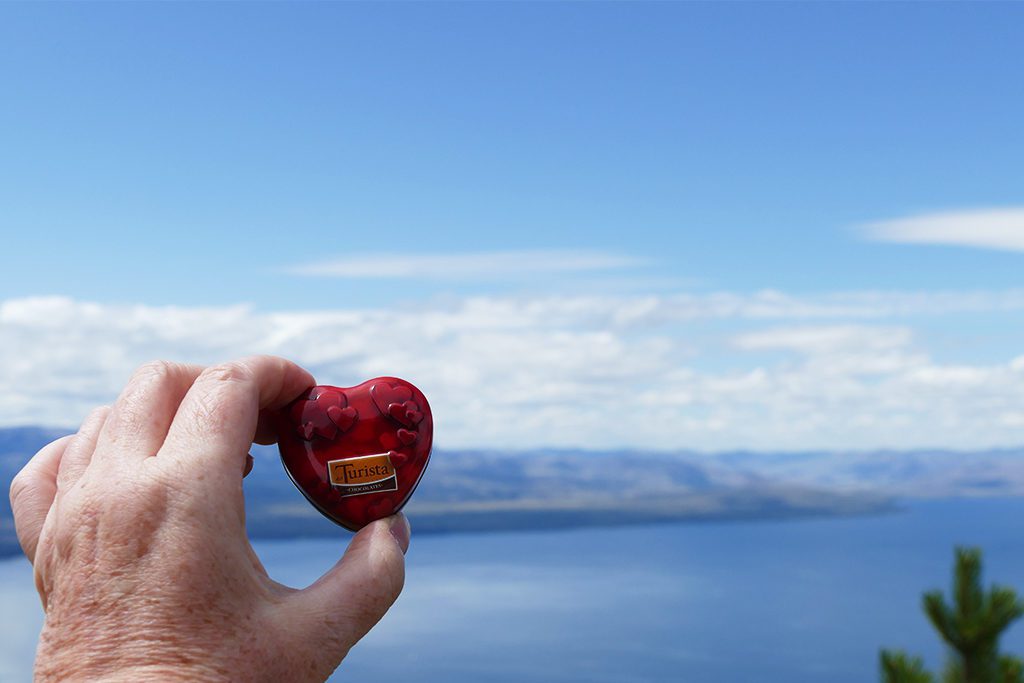
I, however, was just standing there, taking in all those gorgeous shades of blue.
Day Trip to El Bolsón and Lago Puelo
15 Minutes of Fame
“Good morning, everybody! On today’s tour, a lady all the way from Germany is joining us – Mrs. Renata”, announces the loudmouthed tour guide my participation in the day trip to El Bolson while I’m making my way between the seat rows to the back of the bus.
I’m not exactly shy, but there is no reason to make such a fuss over my presence – there are about 16 other people, after all. Why doesn’t he introduce them?
“Hey, if I’m the attraction of this tour, I want you to tip me!” I’m trying to shut him up in a fun way. It works, everyone is laughing, and Mr. Loudmouth changes the topic.
But nevertheless, I was introduced in quite an intrusive way. Consequently, I remain one of the highlights till the end of the tour.
On the bus, my fellow day-trippers are eyeing me secretly from the corners of their eyes. As I look back at them, they sheepishly smile. It’s kinda sweet. Being a foreigner from so far away and, nonetheless, speaking their language fluently seems to be quite fascinating.
During our visit to an organic orchard, a mother-daughter-couple is sneaking their way next to me and during the break, only the fast’n’lucky single mother from Venezuela with her two kids finds a seat at my table to ask me some questions.
Wow, so this is what it feels like to be really, really popular. However, I’m some sort of day trip homecoming queen just because I traveled over 12,000 kilometers to join this tour.
Well, if that’s my claim to fame, so be it.
El Bolsón
The trip to El Bolsón was my first choice. As a matter of fact, I even wanted to spend two days there. Eventually, it turned out that the coach I had to take to continue South would not stop there so I decided to stay in Bariloche and visit this famous place on a day tour.
Why is El Bolsón so popular’n’famous? After all, it’s just another small town.
Located at the foot of the Cerro Piltriquitrón, the town has a particularly mild climate for its southern location and is, therefore, a very fertile’n’fruitful region.
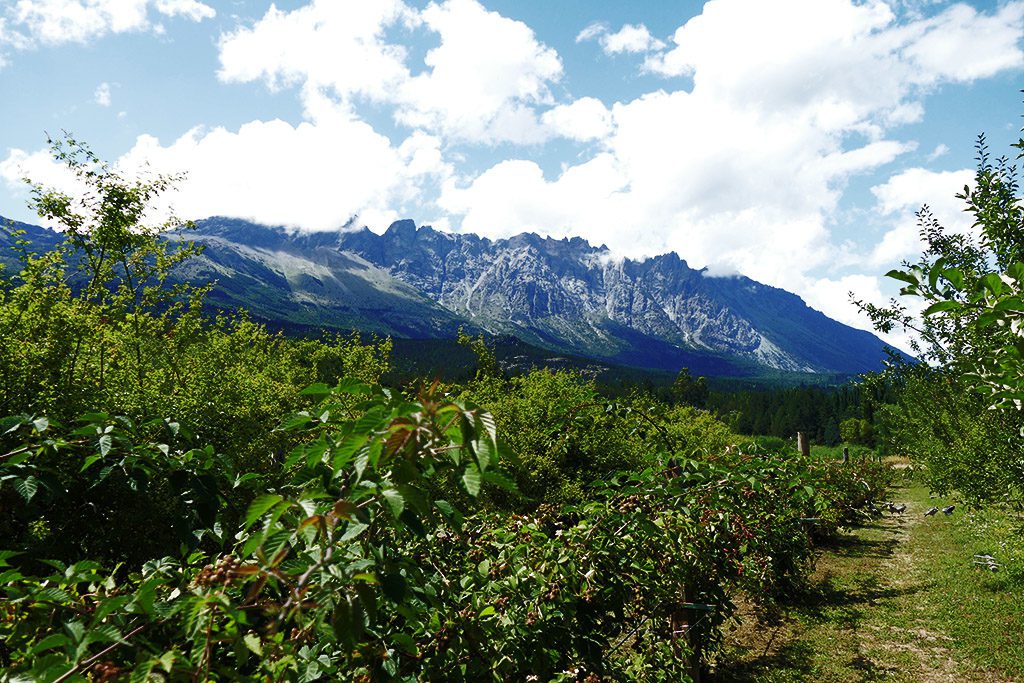
As I mentioned above, we were visiting an organic orchard where, after a short introductory tour, we could purchase some produce at their farm store. I buy five packs of different local seasonings and a big bottle of organic blueberry juice against a terrible cough that’s been torturing me for two days.
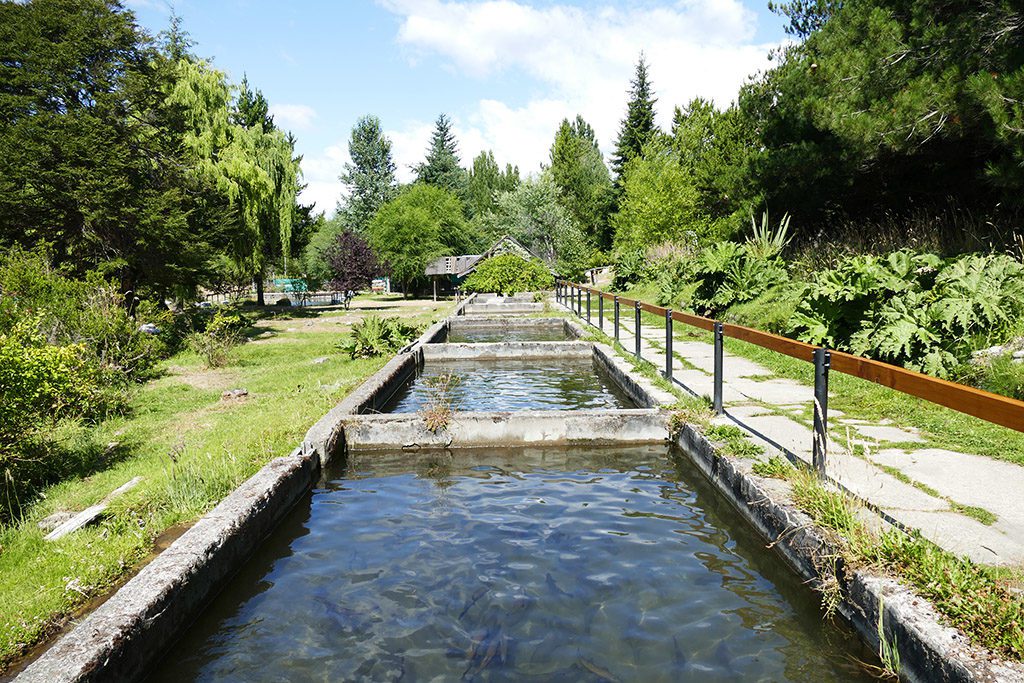
After another short tour of a trout farm, we finally make it to the town of El Bolsón.
In the late 19th century, the first non-indigenous settlers in this area were farmers from Chile.
Alternative Life Style
Then, in the 1970s, in the times of Woodstock and the longing for an alternative, independent lifestyle, hippies from Buenos Aires migrated to El Bolsón in search of peace and love. Living in a self-contained community, they practiced horticulture and artisan craftwork.
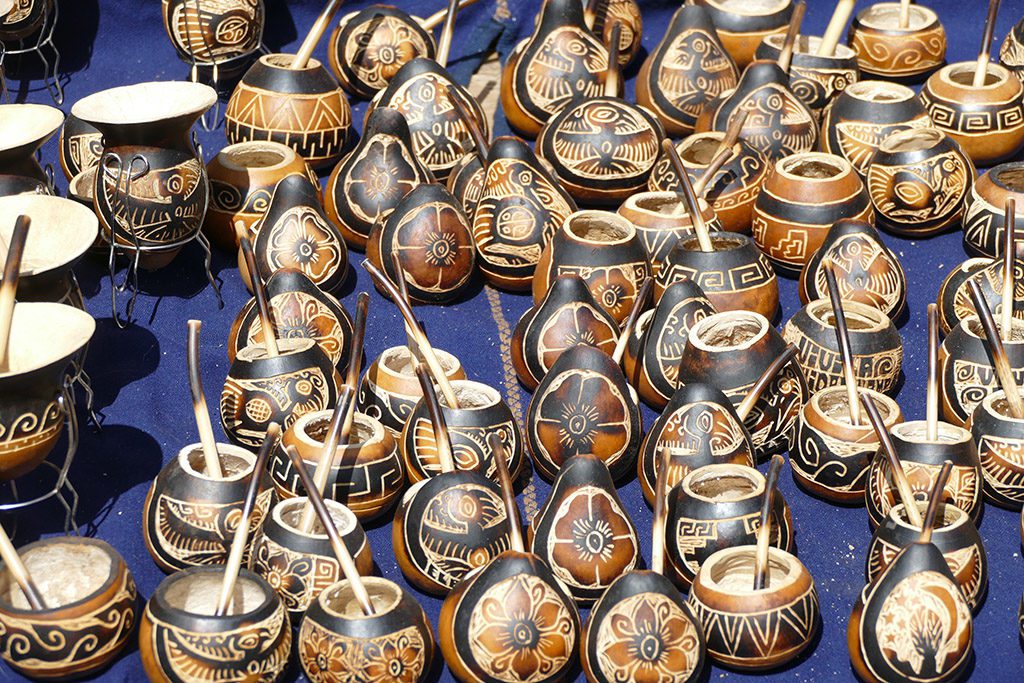
On three days a week, Tuesdays, Thursdays, and Saturdays, there is a market and craft fair, and those are the days when the tourist buses from Bariloche get here. Therefore, this market is an important income source for today’s inhabitants.

Most of the visitors who actually stay here are still rather hippie-ish backpackers. But nonetheless, every nature-lover will find their Dorado around El Bolsón’s since apart from hiking and climbing in the mountains, it’s a great place for rafting and fishing, too.
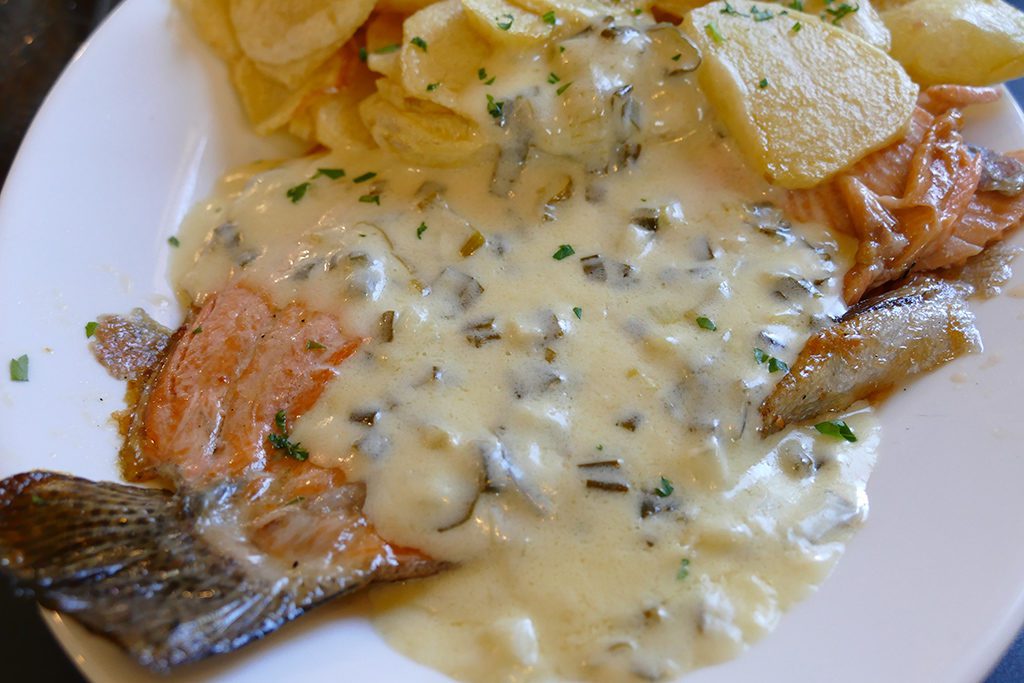
Trouts, coming from the clear, ice-cold lakes and rivers, are one of the region’s signature export products.
Lago Puelo
After some shopping – by my fellow day-trippers – and a big lunch – for me, we were heading to Lago Puelo.
As I see the clear, turquoise water, I remember that this lake was the main reason why I came to El Bolsón. Its glacial waters are crystal-clear.
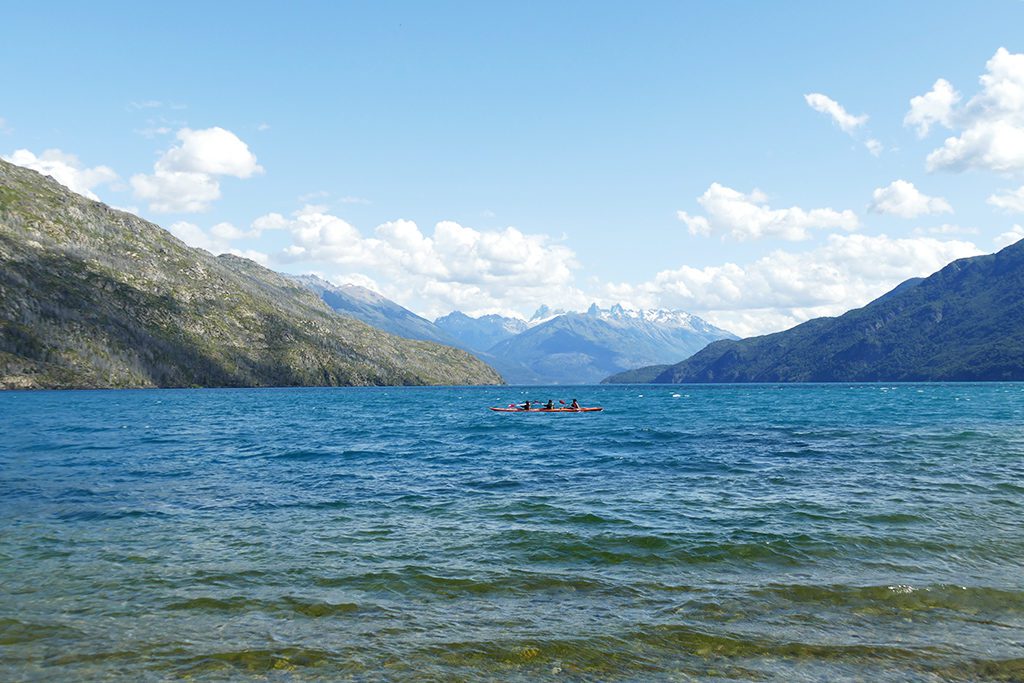
Located in a National Park and Reserve, there are around 20,000 visitors who come every summer to enjoy the water’s beauty and the serenity of the surrounding mountains and forests.
Day Trip Circuito Grande
New day, new trip. And, unfortunately, new loudmouth. By the time we reach Bariloche’s city limits, this Mr. Loudmouth has said my name about fifty times. Oh dear, a Spanish-speaking, solo travelling gringa is really a great token for these guys.
This Mr. Loudmouth is talking without cessation, lecturing us on topics totally unrelated to this trip, sharing his point of view on basically everything. It’s a permanent, slightly annoying drone. And while he’s blathering on, we are passing by the most amazing places.
All other buses are stopping and people are taking pictures. We are stuck on a bus that keeps on going with a man that keeps on talking. I feel like kidnapped, complaining a couple of times: I want! to! take! pics!
Villa Llanquin
Mr. Loudmouth staves me off, we would soon stop at a truly beautiful place. And the bus keeps on going with a man that keeps talking. I’m annoyed. Very annoyed.
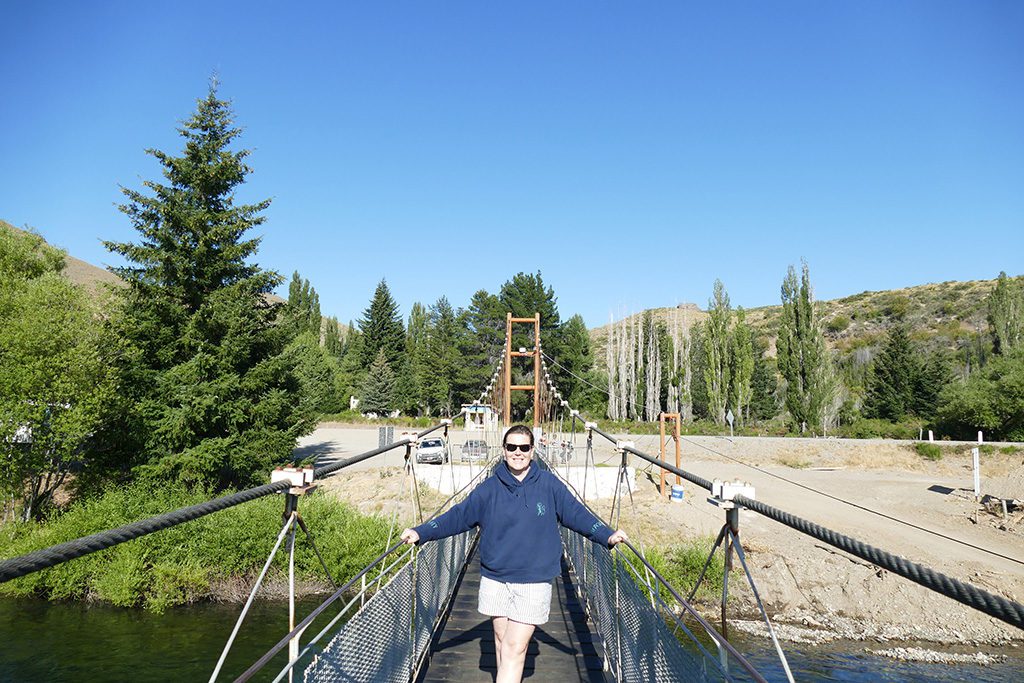
Then, finally, Mr. Loudmouth had mercy and let us get off at Villa Llanquin where a suspension bridge is crossing the Limay River.
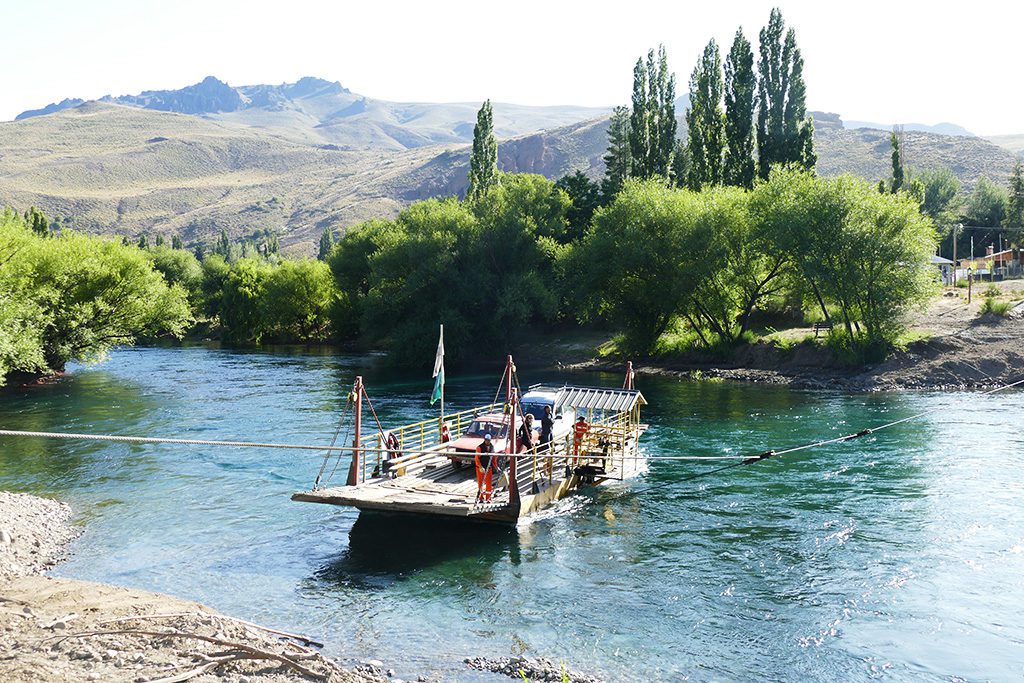
We then continued on a rough gravel road and not far from Villa Llanquín, we stopped again at what they call the Lemu Cura viewpoint.
Lemu Cura
This was the saving grace – forgotten the stupid bus, gone the endless monologue…drowned in waters of the bluest blue with a hemline of cool turquoise.
Life was good.

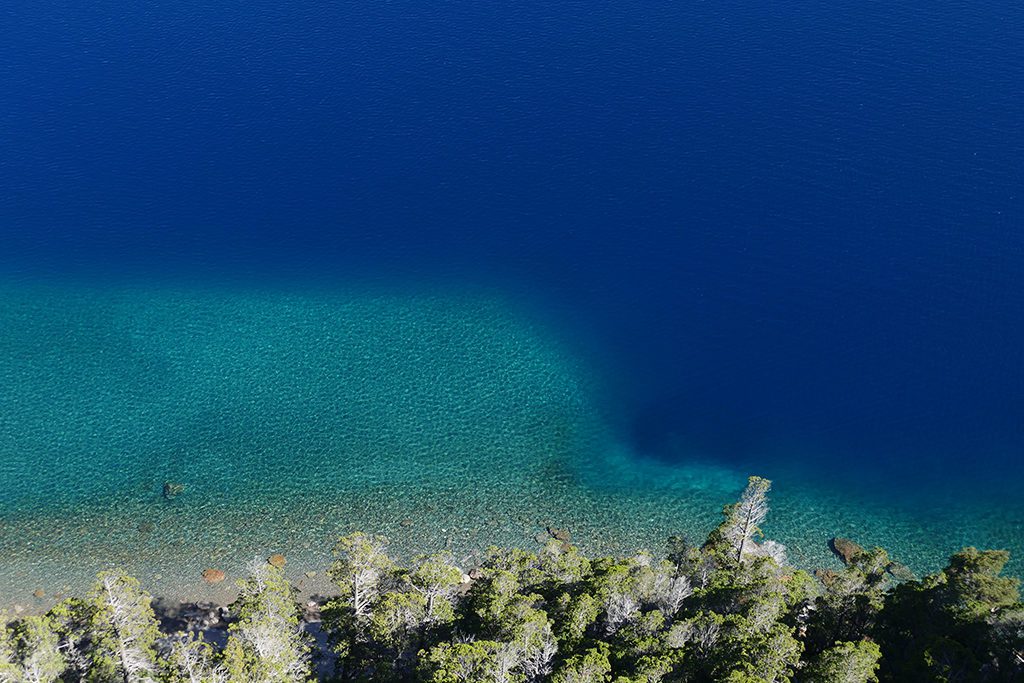
Actually, after having enjoyed the sight of these marvelous sceneries, I was so pleased that I stopped nagging and rolling my eyes and let Mr. Loudmouth be Mr. Loudmouth.
Patiently, I was looking forward to the next stop.
Villa Traful
Which then was at Villa Traful, a hamlet on the shores of the same-named lake. It is connected by the Traful River with Nahuel Huapi lake.
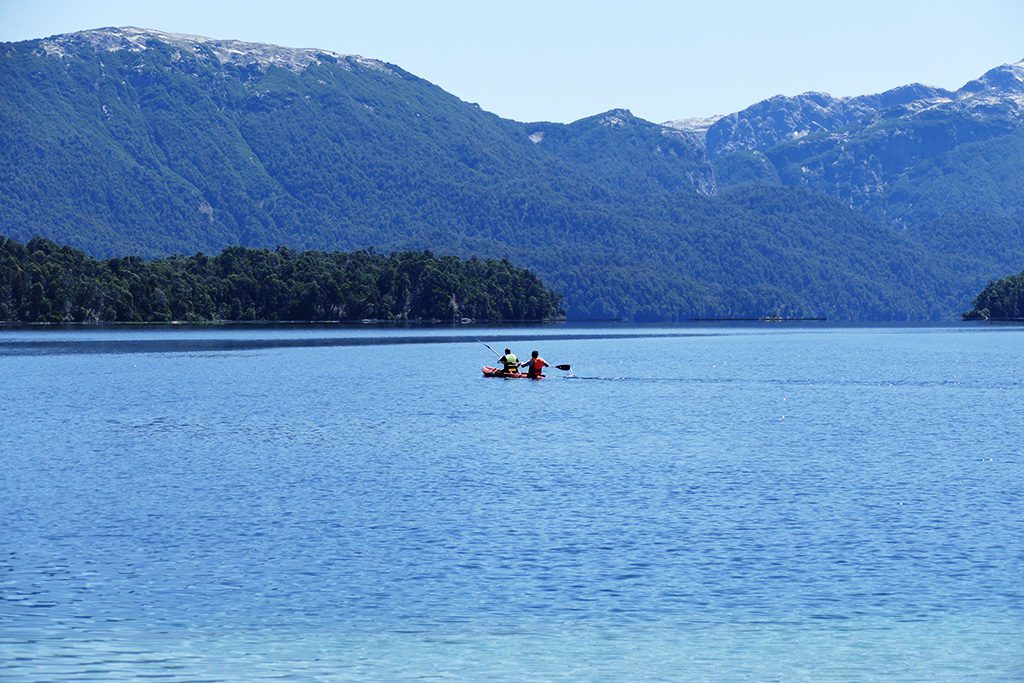
Hey, they call this region Lakeland for obvious reasons!
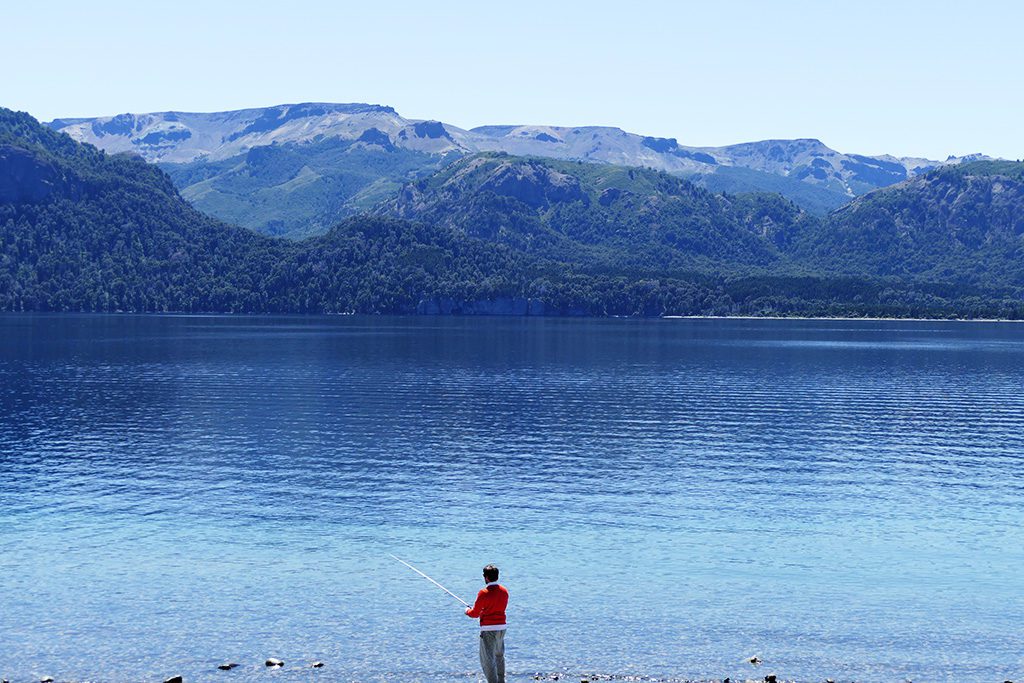
Yes, the stop at Villa Traful was nice, too, and I totally understand that people spend their vacation in these serene surroundings.
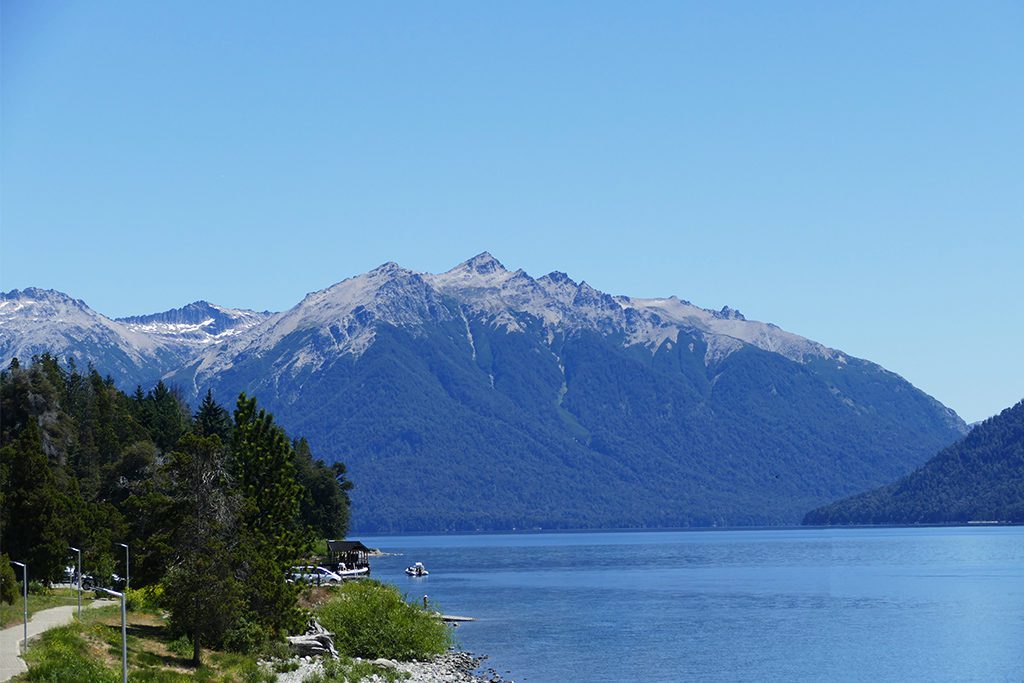
However, we continued. To more highlights, namely Villa La Angostura which is only an eight kilometers hike from the famous Bosque Arrayanes – but this enchanted place was on my list for the next day.
Day Trip to Bosque Arrayanes and Isla Victoria
As they sell you the boat trip to the Bosque Arrayanes and Isla Victoria, it comes without the entrance fee to the National Park and the port tax, which you have to pay once you get to Puerto Pañuelo, located about 24 kilometers west of Bariloche.
Also, the shuttle to the port is not included. For an additional 500 pesos, they don’t even pick you up at your hotel but you have to catch the shuttle at designated stops.
Nobody tells you that there is also the public bus #20 going every twenty minutes and taking you to Puerto Pañuelo in about 45 minutes for something like 35 pesos. 35! 70 round trip! Instead of 500.
The Night Owl Ride
Since, on the one hand, I’m a cheap person, I decided to take the public bus. Since, on the other hand, I’m a very prudent person, I wanted to make sure I’d be there on time.
Therefore, I took an early bus. A very early bus. Some people might say a far too early bus.
Since it was still very early and it was a Saturday, Bariloche’s streets were surprisingly lively. Lots of young men, clearly inebriated, as well as young women who obviously didn’t stick exclusively to soft drinks, either, were weaving on the sidewalks, holding on to each other.
With this crowd – and me – the very, very early bus #20 filled up right at the civic center stop and off we went across Bariloche and then along the unending Avenida Exequiel Bustillo.
While I had woken up early, most of my fellow passengers hadn’t slept at all and I had the feeling they urgently needed to sit. Or, even better, to lie down.
You have to give it to the driver that he did his best to get them home as fast as he possibly could. For every stop he had to make, he made up by racing like a madman till the next night owl signaled to get off.
Llao Llao
So time passed quickly amidst this spectacle of juvenile drunks and the racer at the wheel and we actually made it to Puerto Pañuelo far ahead of the scheduled time. And since I had taken a far too early bus, anyway, I now had an hour to spend.
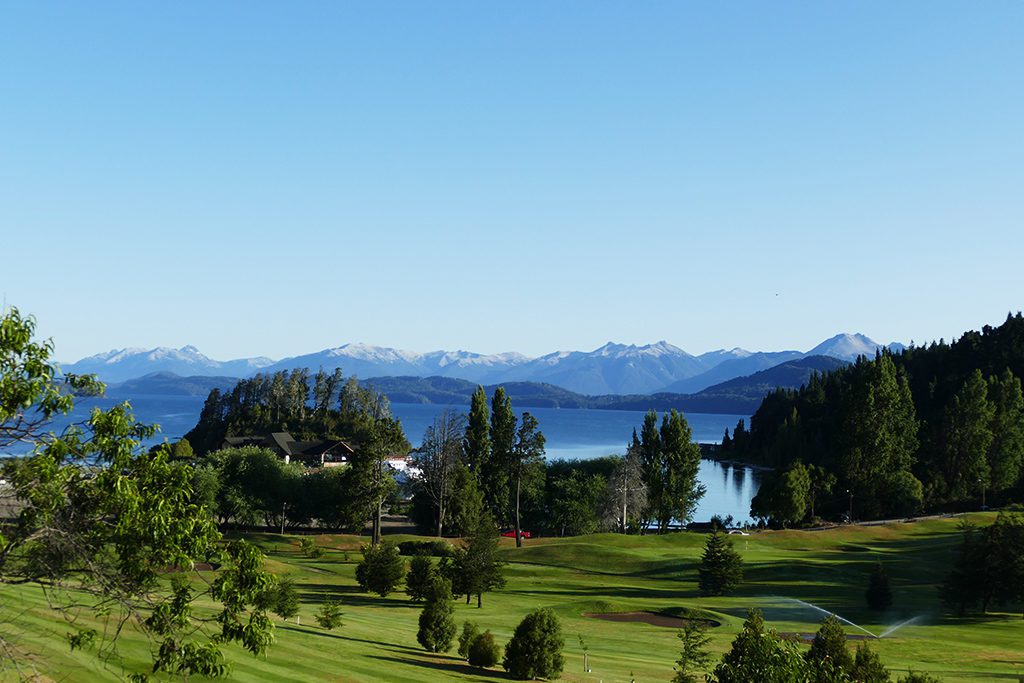
Actually, there are far worse places to spend an early Saturday morning than Puerto Pañuelo and the adjacent Llao Llao hotel, located on a hill above the port.
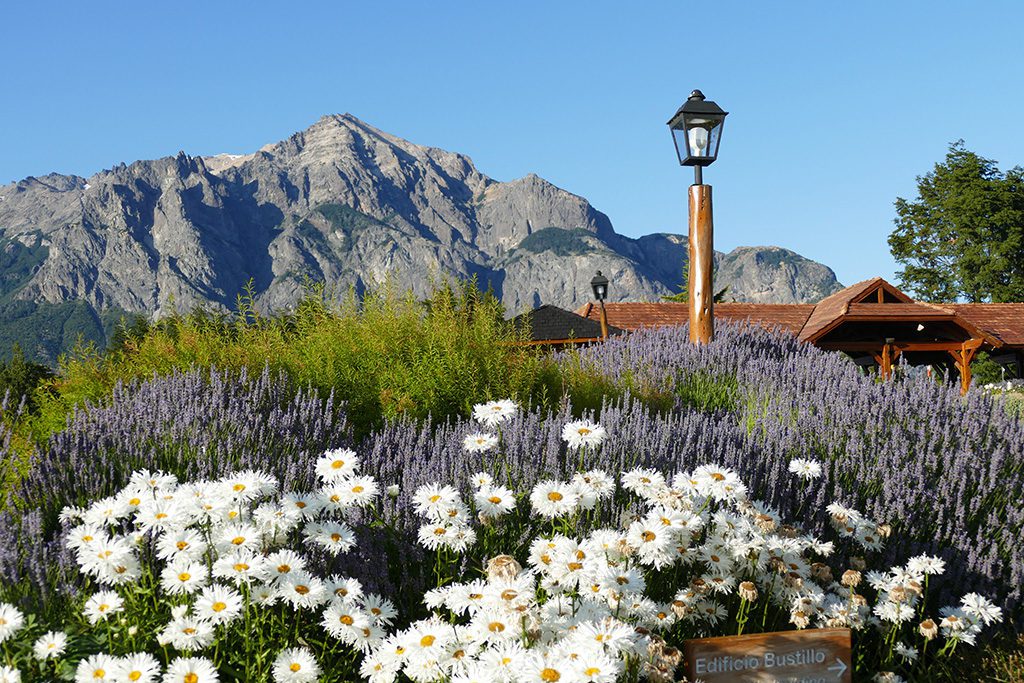
I had eaten breakfast so I just wanted a nice cup of coffee, no matter how much I had to pay for it. Unfortunately, before 10 a. m., they don’t serve just coffee, even not an expensive one. You have to buy their breakfast.
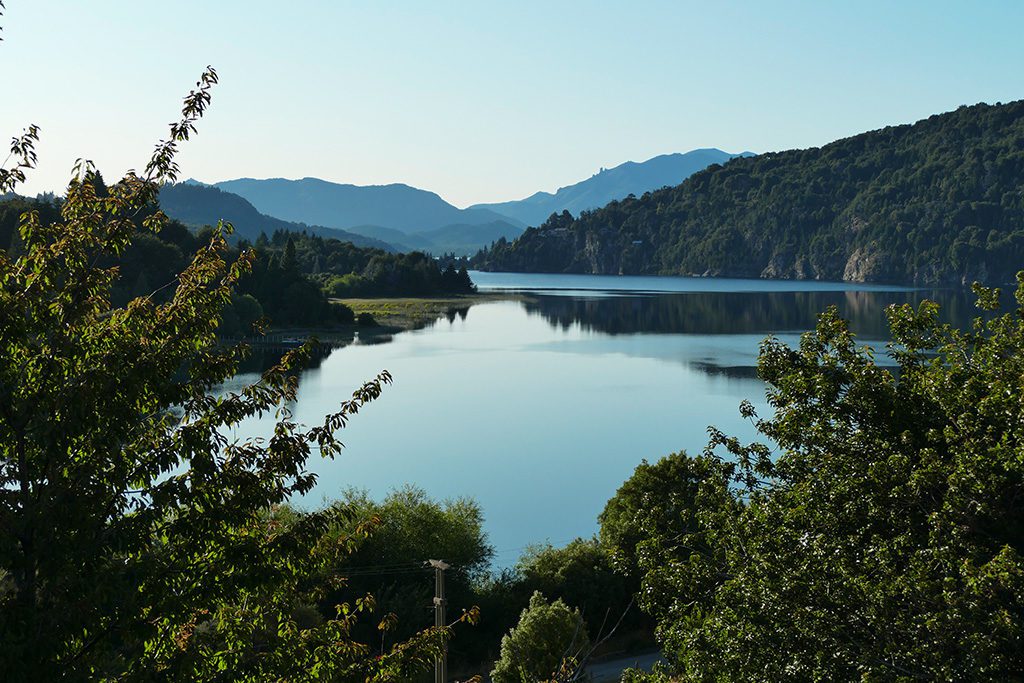
Therefore, I only took a couple of pictures of how the other half lives – and most of all, of what the other half sees from their hotel – and went back to Puerto Pañuelo where the first shuttle buses arrived.
Los Arrayanes
Los Arrayanes is a national park of about 17.5 square kilometers. It became a national park in 1971 to protect the unique arrayán trees. Some of these species are hundreds of years old.
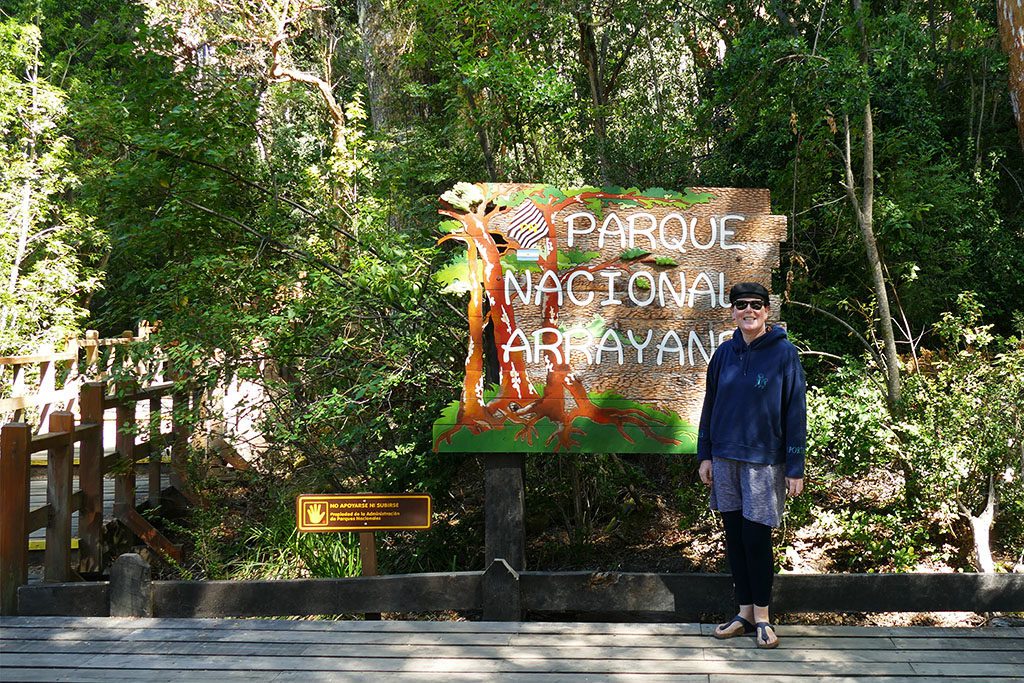
Interestingly, the arrayán is a plant classified as a shrub that only here takes the bearing of a tree. Isn’t that amazing?

It has an intense cinnamon color with a very thin crust. To protect the soil and the fragile roots, visitors are not allowed to trample where they please but have to walk on some wooden path.
Isla Victoria
The last ice age shaped Isla Victoria and left several traces in the region, beginning with the Nahuel Huapi lake itself. In the past, indigenous communities inhabited the area.
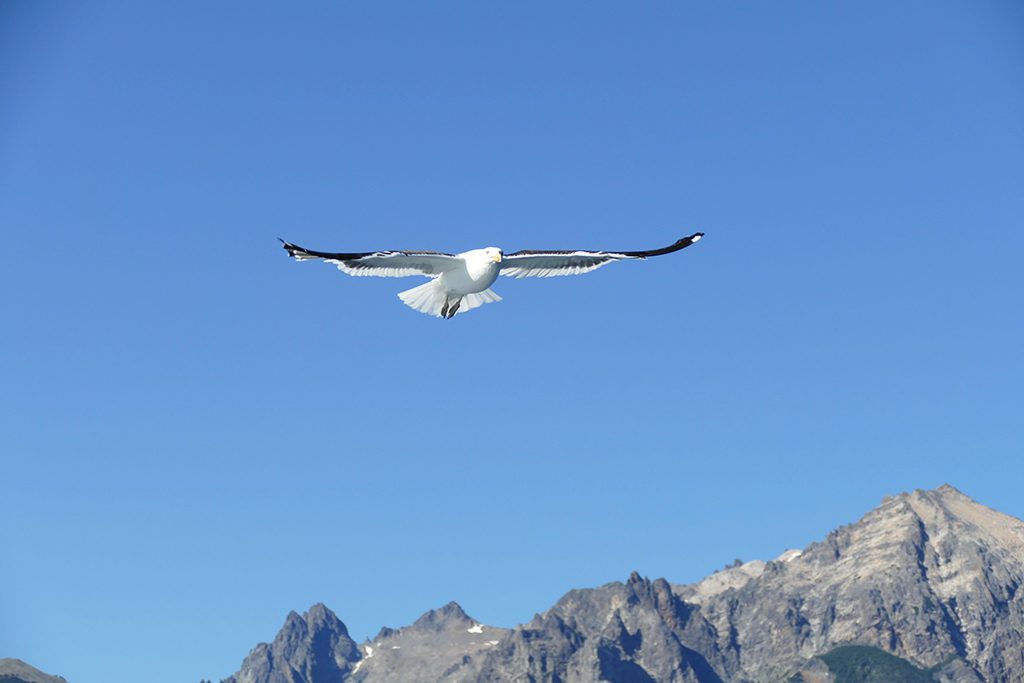
In the late 18th century, missionary Francisco Menéndez found the island, which he called Isla Larga, uninhabited. It was never known for certain what happened to these ancient inhabitants. Only in 1918, the isle was called Isla Victoria on a map. It is believed that the name Victoria is honoring the painter and philanthropist Victoria Aguirre who visited the region in 1917.
Anyway, the visits continue – actually, there are two tours to the island every day. While the route is exactly the same, the early tour takes almost two hours more which you can spend having lunch or lazing on the beach.
After the two loudmouths that accompanied the other trips, I enjoyed the calm and knowledgeable explanations of the tour guides. After all these tours, I felt quite tired and was in no mood for more of a pointless brouhaha.
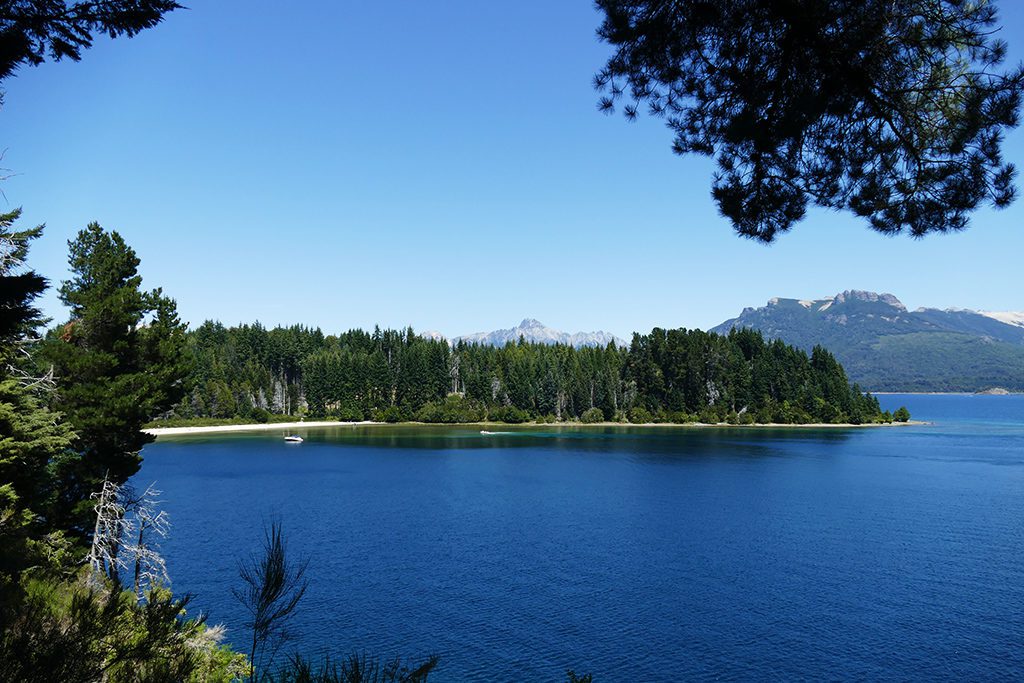
Sadly, that’s also the reason why I chose the third option of how to spend my day on the island.
The first one was an 8 kilometers hike which I would have loved to join, but…naaah, I’m too tired.
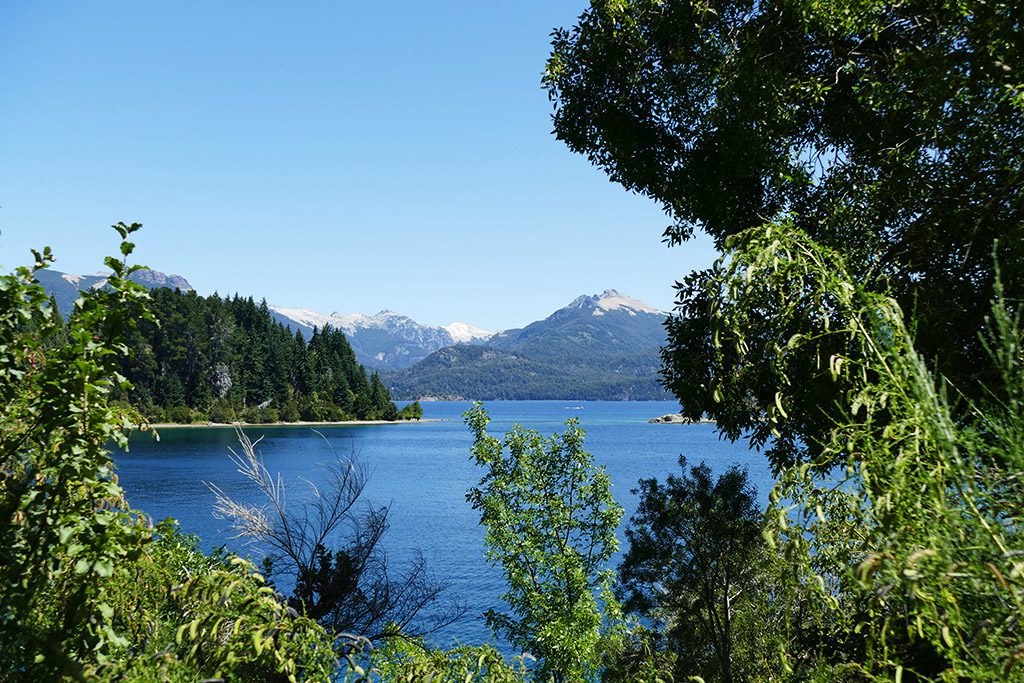
The second one was a short hike of about one hour, guided by a lovely lady with a beautiful voice. Listening to her deep, warm voice alone would have been a joy. At the very last moment, I opted for the panza arriba alternative – panza arriba translates to belly up. Yes, I spent three long hours on the beach, reading, sleeping, and looking at the beautiful surroundings.
Practical Information
How to Get There…
Bariloche has an airport that goes by the name of Teniente Luis Candelaria. And since there are a couple of connections with Brazil, it’s a so-called international airport.
While this international thing doesn’t convince me, especially during high season, there are tons of domestic flights from many different cities.
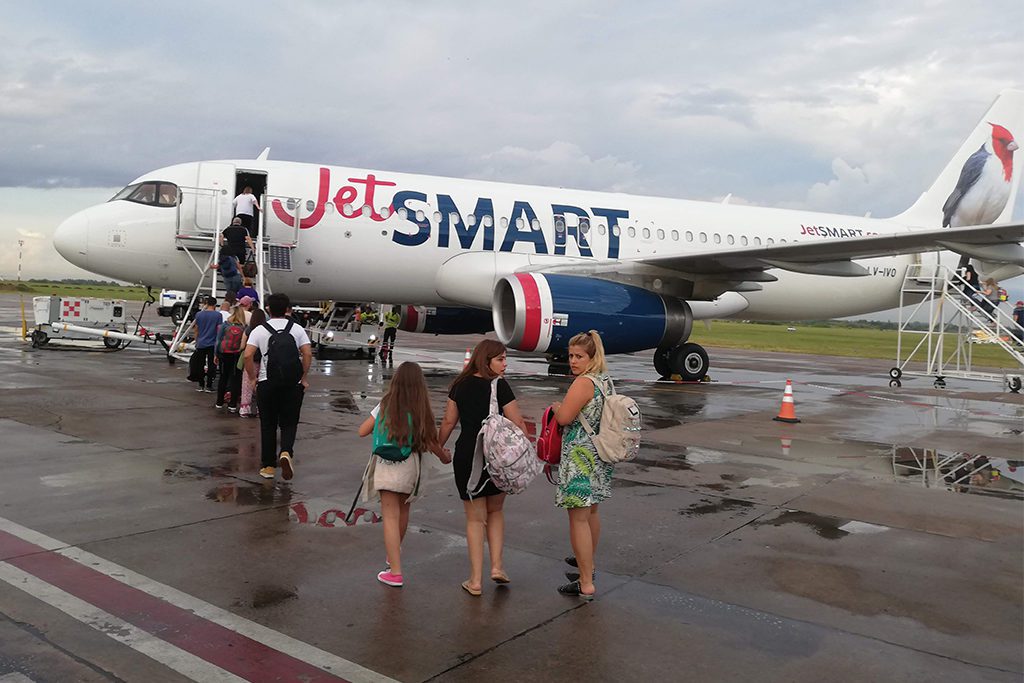
As I came from Buenos Aires, there were two different flights at almost the same time. Both low-cost carriers: Argentine Flybondi and JetSmart, a company from Chile. Low-cost flights actually deserve the attribute low cost since they start at around 20 US$. However, in Buenos Aires, these flights are going from El Palomar airport, you’ll find all the relevant information in this post.
Once you land in Bariloche, you might be shocked by the temperature difference. I left Buenos Aires in sweltering heat and as I landed, it was 10°C. So you better be prepared.
Long Distance and Shuttle Busses
There are various options to get from the airport to the city center. Obviously, you can take a cab, but that’s actually quite a waste of money. Because besides the city bus #72 that costs about 20 pesos – don’t forget your SUBE card to pay the fare – there are special shuttle buses for about 200 pesos that bring you straight to your accommodation which is a great service if you aren’t familiar with the place.
About two kilometers east of the city center is the bus terminal. From here, coaches are going to many different places around Argentina. However, before you book a bus ride, check the hours – most trips are very long and the buses are far less comfortable than for instance in Perú.
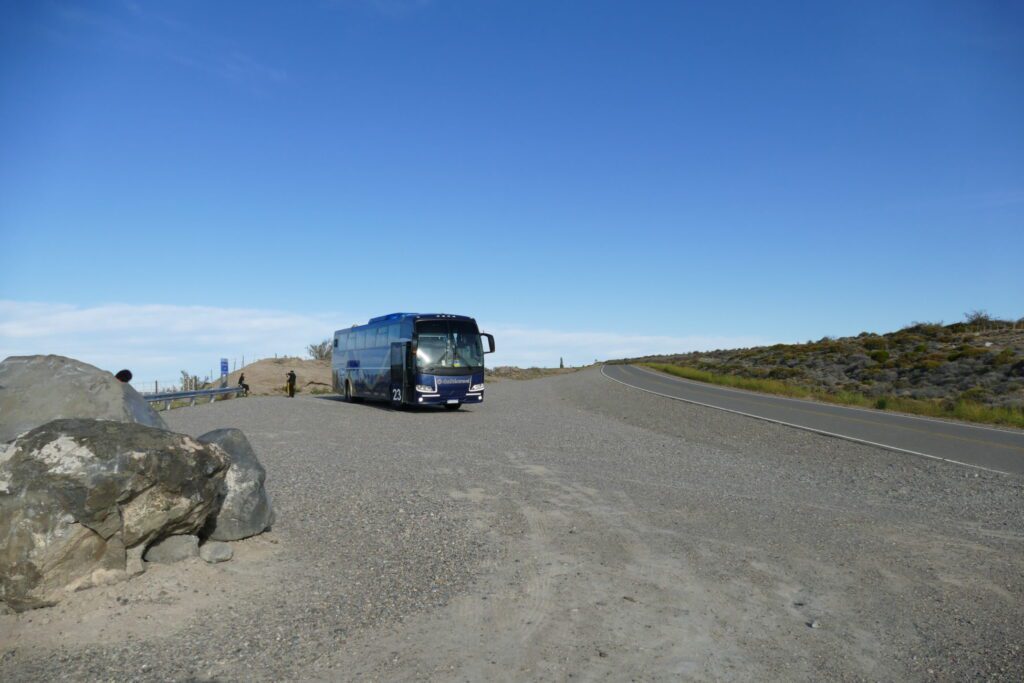
If you are going from Bariloche south to Los Antiguos, El Chaltén, or El Calafate and you are going by Chaltén Travel – which I highly recommend – note that the bus does not leave from the bus terminal, but from the Club Andino on the Calle 20 de Febrero 30.
…and Around
Although Bariloche is not that big and very touristy, they have a great system of buses taking visitors even straight to some of the points of interest such as the Cerro Otto – Línea 51, the beaches on Península San Pedro – Línea 22, the Colonia Suissa – Línea 10, and Puerto Pañuelo – Línea 20. You’ll find all the routes and timetables on this website.
Of course, there are also cabs – metered like everywhere in Argentina and not very expensive.
Organized Tours
As I said, downtown Bariloche is packed with travel agents – big and small, shabby and fancy. The tours don’t differ at all, but the prices do a bit – and you can even haggle a little.
However, according to my experience, ZigZag Travel is the cheapest one. I checked a couple of agencies, negotiating cheaper prices – and still, ZigZag had the best price.
You can check them online.
Although on their site they say otherwise, I got the same discounted prices also at their office. Only that the office is not that easy to find.
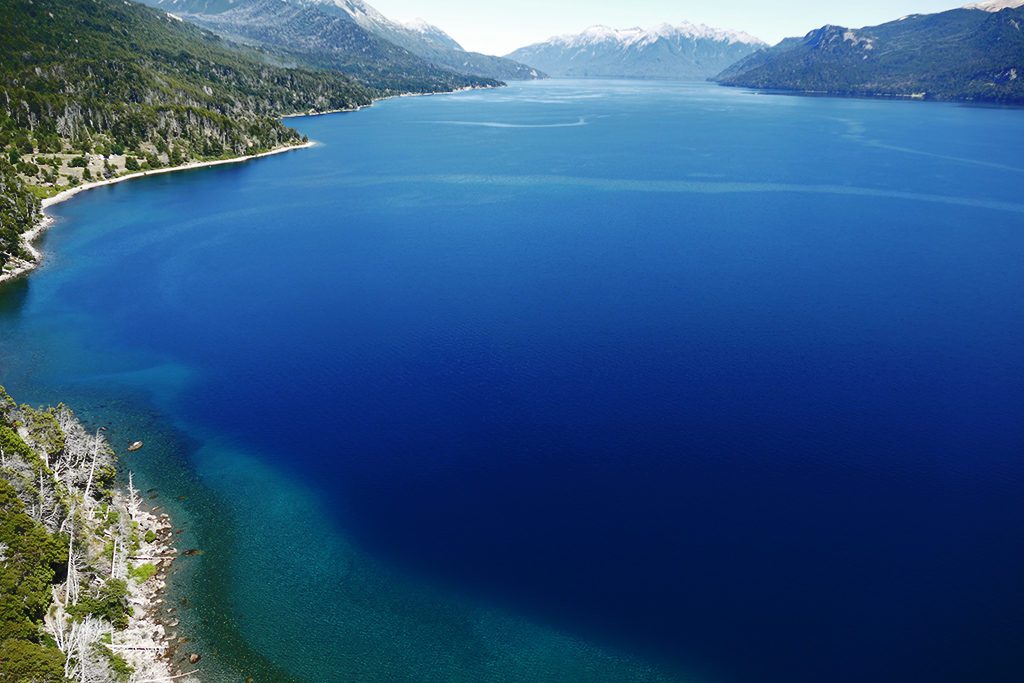
Here is their address – and on the map, you’ll find the exact location. Be aware that the office is on the second floor, they don’t have a big sign.
ZigZag Travel
Villegas 316
2nd Floor
Office A (R8400)
San Carlos de Bariloche
Phone: +54 – 294 – 443 20 03
Email: agustin@zigzagtravel.com.ar
Monday to Friday 9 a. m. to 1 p. m. and 5 p. m. to 9 p. m., Saturday and Sunday only from 5 p. m. to 9 p. m.
Although they are claiming on their site to do tours in English, all the tours I took were in Spanish. Also, other groups we met on the way were in Spanish. Actually, I met very few tourists that were not from a Spanish-speaking country or from Brazil, consequently, all tours were exclusively in Spanish. Just a heads up for you.
Since things can change quickly – especially in Argentina – here are some more great opportunities where to book a tour. Especially if you travel solo, they’ll enable you to see many of the remote sites in a comfortable and most of all safe way*:
Where to Stay…
Since Bariloche is very touristy and therefore everything is a bit more expensive, accommodations, too.
I stayed at the Ausonia hotel which looks nice online but is a bit of a dump in reality.
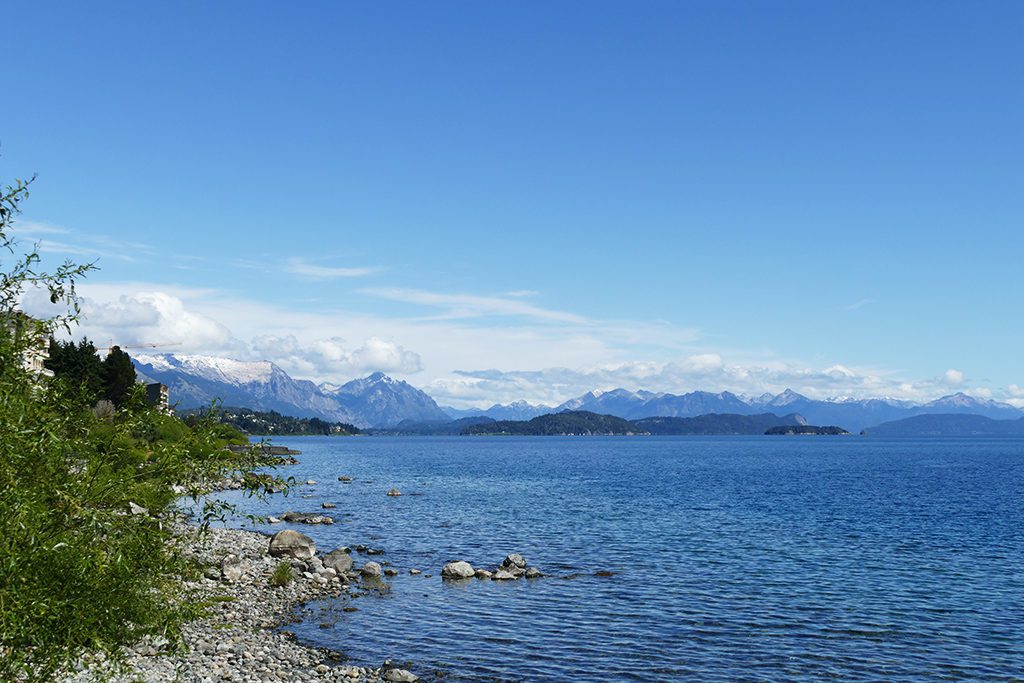
First, they assigned me to a room that was a bit like a prison cell. However, they were immediately willing to give me another room. It was on the 4th floor and had an amazing view of Lake Nahuel Hapi – a million dollars! Nonetheless, as soon as I didn’t look at the lake but around the room, I was far less impressed.
On the other hand, I left early in the morning after the – complimentary – breakfast and came back to my room in the evening to crash.
So if you’re not on a honeymoon or a special birthday, it might be a quite cheap and okay-ish option.
On this map, you find different options for where to stay in Bariloche*:
Booking.comOne very important thing: In addition to the price of the room, there is a crazy 21% tax. The good thing is that foreigners who stay up to 90 days in the country do not have to pay for it. However, sometimes you have to remind the receptionists since they are so used to local tourists. Nevertheless, you have to pay your hotel bill by credit card to be entitled to this exemption.
…and what to Eat
There are many restaurants offering what they think is Alpine food, however, you get also trout from the ice-cold waters around. There are also many snack options like burgers and empanadas. Nothing really overwhelming and everything is a bit pricier than in not-so-touristy spots.
Cash And Cards
Obtaining cash in Bariloche is actually too easy. Besides the official banks and currency exchanges, there are loads of money changers on Calle Mitre. ‘Change, cambio, dólares’ – these are the sweet things they whisper in your ear.
Actually, it can be very tempting to change with them when they promise you 80 pesos for a €uro instead of 66 that the official bank is willing to pay.
Of course, it’s your decision. You only have to consider that the money might not go a fully legal way – code money laundry – and if something goes wrong, i. e. if you get dud bills – good luck negotiating with those guys.
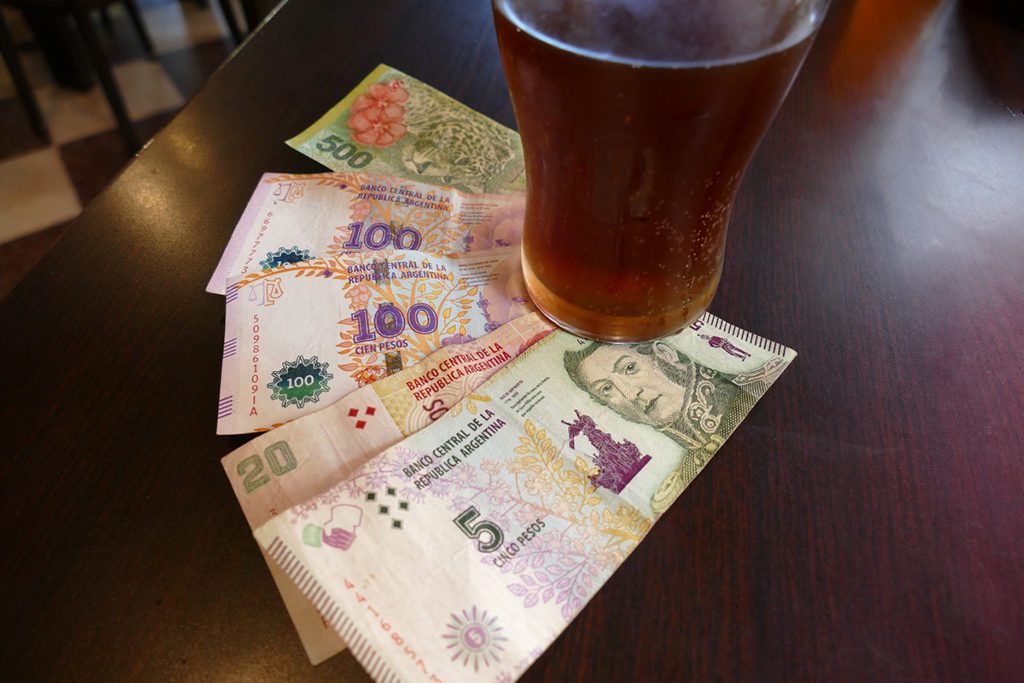
You can pay for most services and even smaller amounts by credit card. However, haggling over prices for instance for day trips often includes the final remark if paying cash. So sometimes, paying cash gets you a better price.
Normally, credit cards work fine at ATMs, but you might encounter another significant problem: There simply might be no cash in that stupid thing.
Yes, it is definitely frustrating having waited for 15 minutes in line just to find out that the person before you got the last bills.
Also, some ATMs are limited to a certain – very low – amount like e. g. 3,000 Pesos; and no matter how much you get, you always pay the same, very high fee.
Language
Yes, Argentina is a South American country once conquered by the Spanish, and Castillano is spoken to this date.
The Argentine Spanish that is. Argentinians pronounce everything that sounds like ya, ye, yi, yo, etc. sha, she, shi, sho. Yo llego becomes sho shego. And the hotel Llao Llao ist being pronounced shao shao, almost like ciao in Italian.
Bariloche is a tourist place so many people speak quite good English. However, since most of the tourists are locals or Chileans – or Brazilians who manage to understand Spanish, the tours I joined were exclusively in Spanish. I believe that if I hadn’t spoken the language, the loudmouths would have translated at least parts of their endless monologues for me. I experienced that in El Calafate when there was one lady from the US on the bus.
Although you probably will be fine with English, you might want to brush up your Spanish on babbel – knowing some words always makes things smoother.
Connection and Communication
Like during most of my trips where European roaming is not available, I did not get a national SIM card but did rely on WiFi – worked like a charm.
However, things might be different if you are planning on doing extended tours and excursions by yourself – then a working cellphone might be a lifesaver. Other than that, the available access spots will do.
Map
San Carlos de Bariloche was only one stop during my exciting Argentinian road trip. Go to the main post to check out all the other destinations.
Pinnable Pictures
If you choose to pin this post for later, please use one of these pictures:
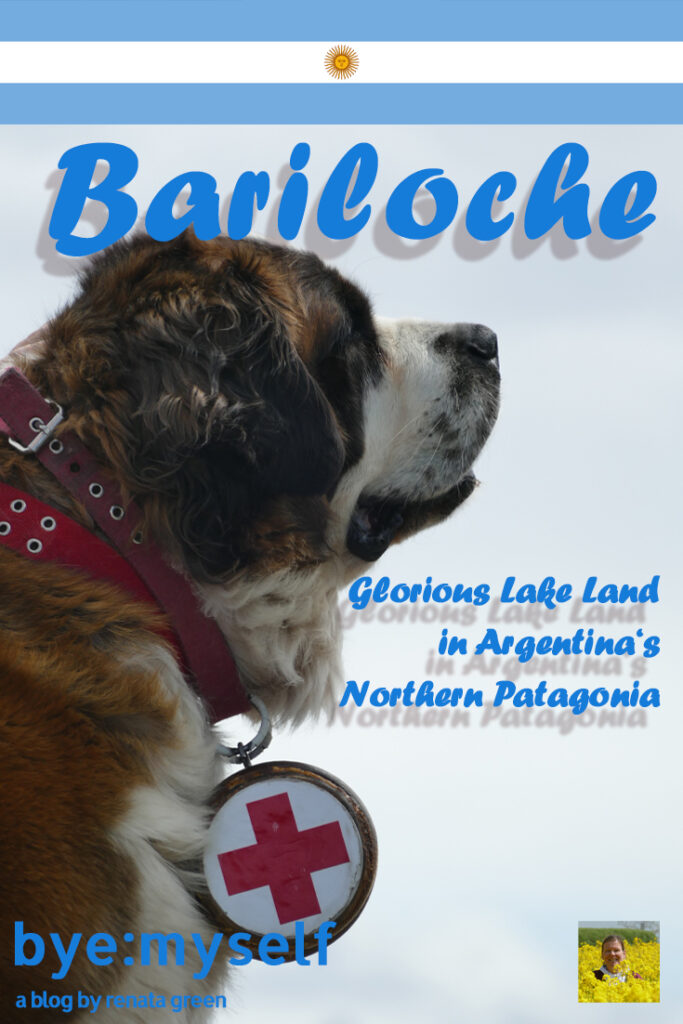
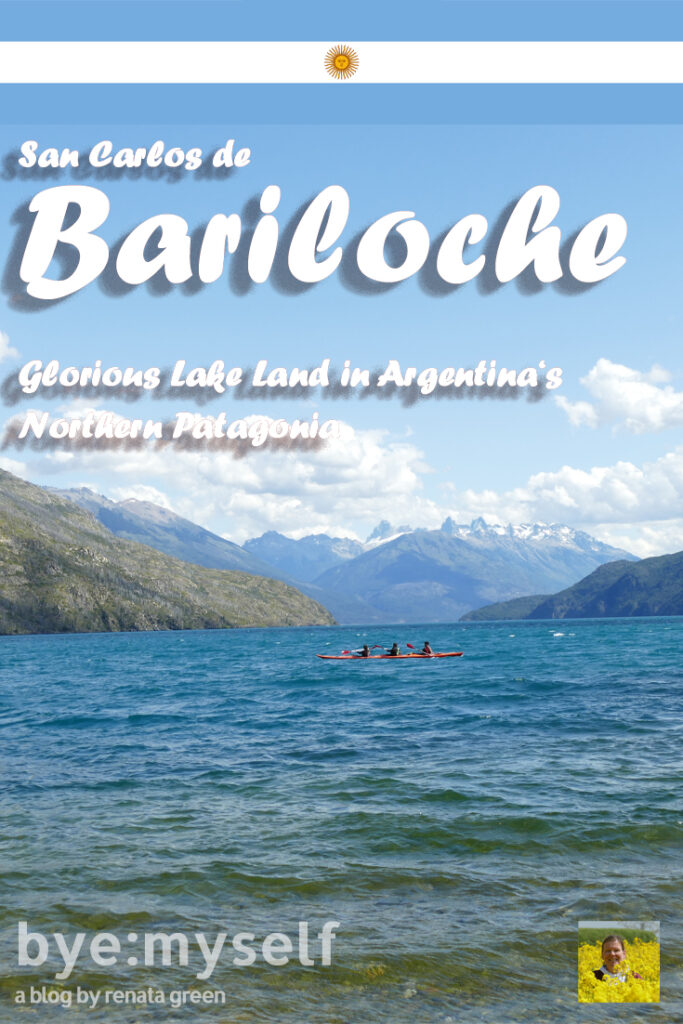
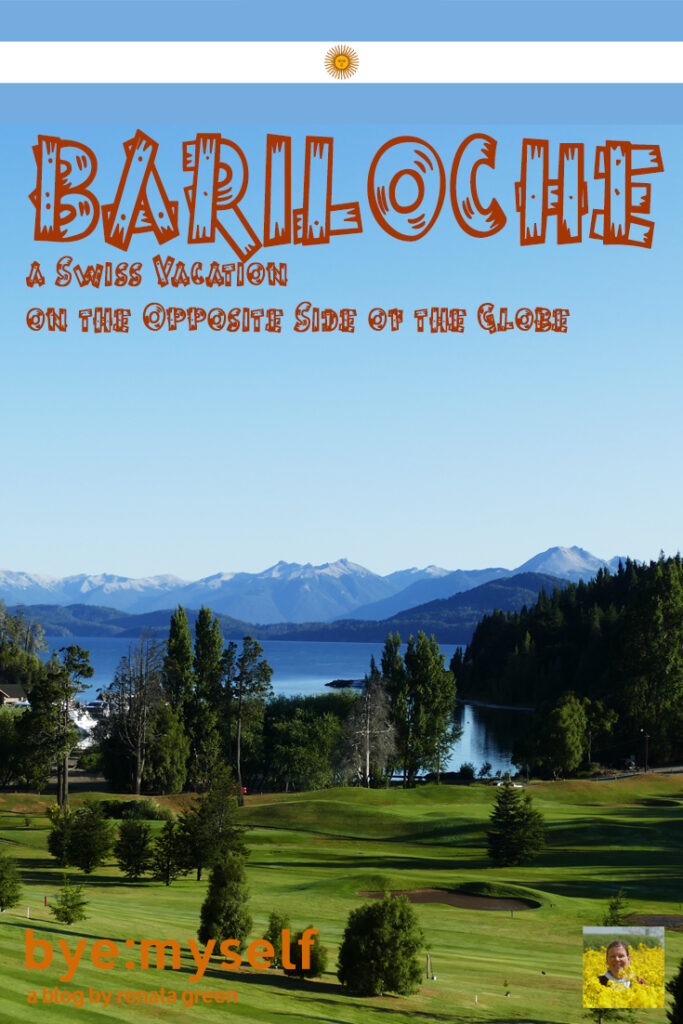
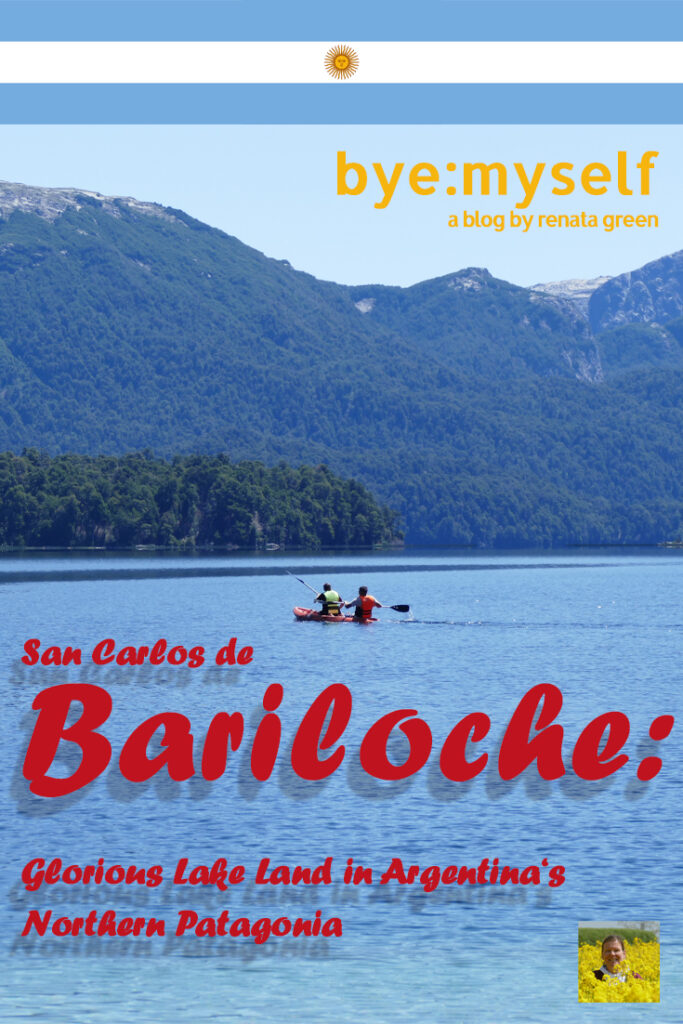
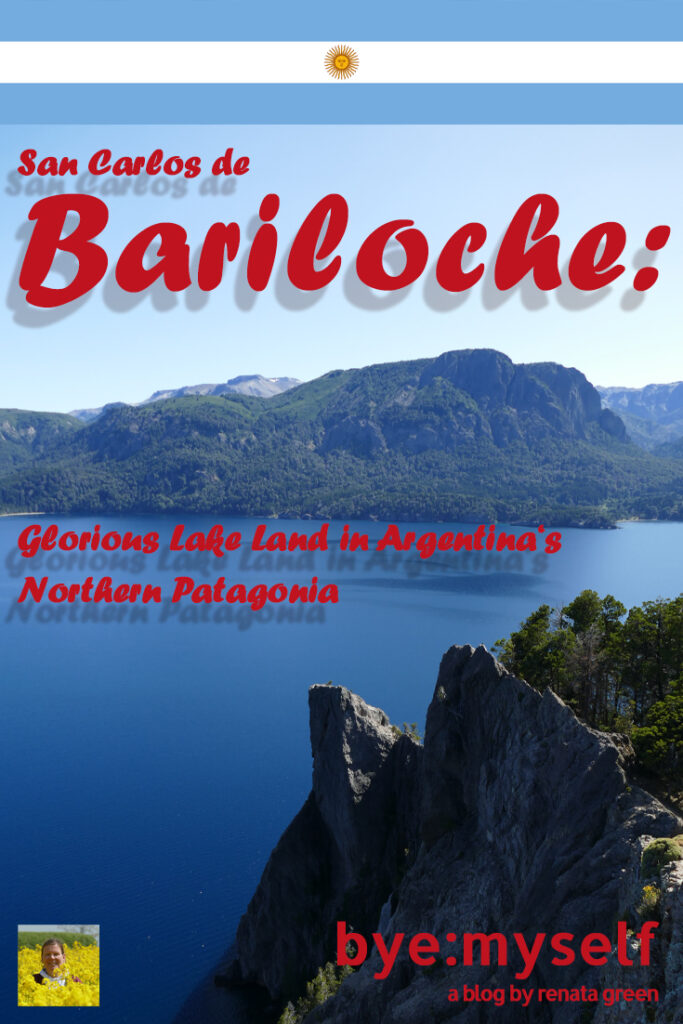
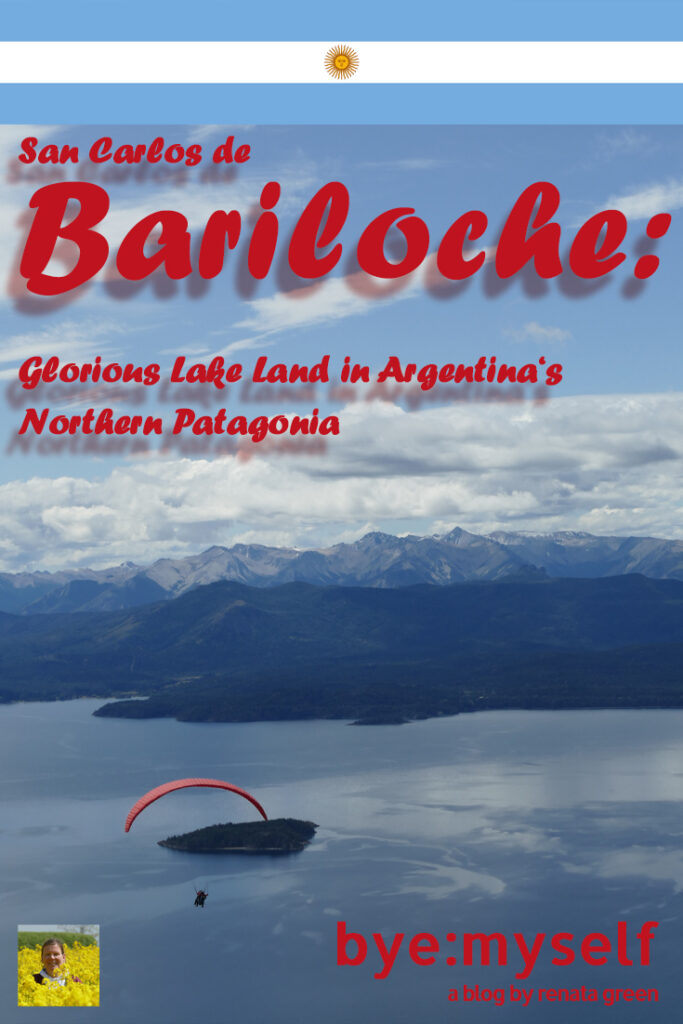
Note: I’m completing, editing, and updating this post regularly – last in November 2022.
Did You Enjoy This Post? Then You Might Like Also These:
Two Days in CARTAGENA
INHOTIM Botanic Garden and Gallery
Guide to OLLANTAYTAMBO and the VALLE SAGRADO
Guide to VINALES – Cuba ‘s Rural Paradise
Guide to ARGENTINA – from the sweltering heat of Buenos Aires to the eternal ice of Patagonia
Guide to CIENFUEGOS – the Fancy Side of Cuba
CUBA – the Complete Guide from Coast to Coast
Carnival in Rio de Janeiro – I am what I am…
* This is an affiliate link. If you book through this page, not only do you get the best deal, I also get a small commission that helps me run this blog. Thank you so much for supporting me!

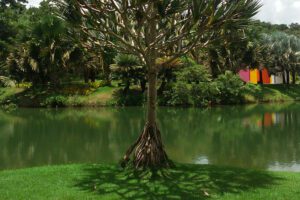
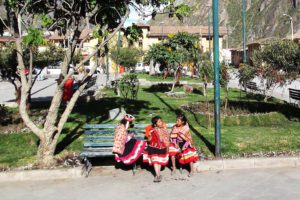
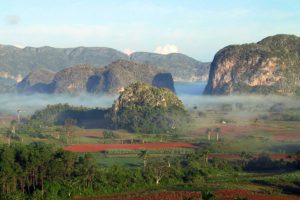
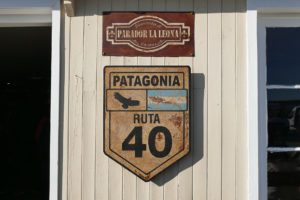
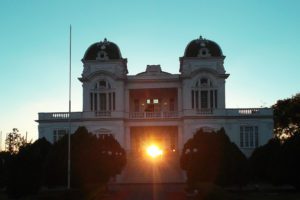
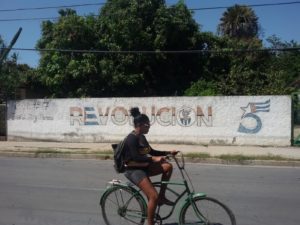
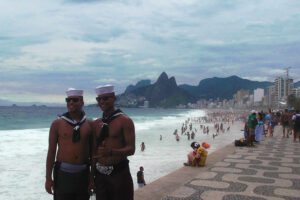
I love that you compare Bariloche to a Swiss Vacation. Those dramatic views certainly are stunning. We are sorry we did not get to explore this area when we visited. Although we would be ok with no skiing. But we would not miss out on the chocolate for sure. Great to read that you were able to visit using public transit. How fun that you were a celebrity on your bus tour! But so great you found quiet and tranquility when you got off. So many great spots to visit in this area.
I have been fascinated by the landscapes around Bariloche since the time I saw some pictures. But it was even more interesting to read your post as you put everything into perspective, starting from the town’s history in the old times.
Thank you so much for a great informative post. This is now on my list!
Wow! My bucket list just got a bit longer. First, thank you for sharing about the history – super important and in my opinion one of the most rewarding parts of traveling is learning about the context of and history of where you are exploring. The views look incredible, and the fresh fish! Yummm!
This is such an interesting read. I had no idea that this area was used as a refuge for Nazi war criminals seeking a safe haven. It definitely looks like a gorgeous place to explore and find refuge.
I only made it as far as the airport in Bariloche; however, I plan a return trip and I will find this article very helpful!
Wow – what did you do at the airport 😀 ?
the place looks magical. I have to admit I have never heard of it before but I am way more curious about it now
What a fascinating place! It invokes a lot of memories of Switzerland as I read through your article, and yet it’s so far away from the actual country. The lake, the gondolas, the chalet, the chocolate all look so familiar, and yet foreign at the same time. What an experience!
Yes, it was a bit crazy 😀
I haven’t heard of Bariloche ever but its place looks lovely and peaceful… I love your travel guide!
Thank you – yes, it’s very serene and tranquil, indeed 🙂
what a breathtaking beauty of nature,,,the food looks delicious too..i hope I can be there someday
Yes, the sceneries are just amazing 🙂
I want to try the chocolate, haha but the pictures are so beautiful, and would love to visit it one day.
It’s totally worth it. It’s funny that despite the natural beauty, everyone is so focused on the chocolate 😀
You had me at chocolate…I dont care if it is called Turista & is mocking me as a tourist with a chocolate problem!
But wow in general, Bariloche looks cool though it seems like more of a hub city for playing in the outdoors rather than a destination by itself. Dont get me wrong, the city of Bariloche itself sounds intriguing but I would rather go on day trips to explore the trout farm or hit up all those hiking spots below the Patagonias, or playing at Lago Puelo. I will say that though it all looks beautiful, all that water looks rather cold. I mean I see some boaters but whether it was the lakes or the city beach it doesnt look like anyone was in the water!
The waters are cold – after all, they are coming from glaciers. I waded a little – other than that…brrrr. Actually, it’s all about the sceneries 🙂
Your pictures are beautiful. I especially like the ones of the various lakes with the mountains in the background. They look very peaceful. Thanks for sharing.
Thanks so much for sharing this lovely travel story here, enjoyed my read & love all the beautiful captured. The chocolate making me so so tempting to enjoy too 😀 Wishing I can travel freely soon, miss all my trips. cheers, siennylovesdrawing
Ask me about it…. 😉
Never heard of this place and never visited it. I like it and I’ve added it on my list. Thank you for the detailed info! – Paolo
That’s a good plan since it’s really beautiful there 🙂
That city beach looks stunning? The photography in this post is so beautiful!
To have Swiss vacation on the other side of the globe must be interesting and I would love to visit this beautiful hilly town. The town of San Carlos de Bariloche really looks amazing with those snow clad mountains and beautiful landscape. Good to know that it is a manufacturing hub of some of the world’s best artisan chocolate.
This website was… how do I say it? Relevant!!
Finally I’ve found something that helped me.
Many thanks!